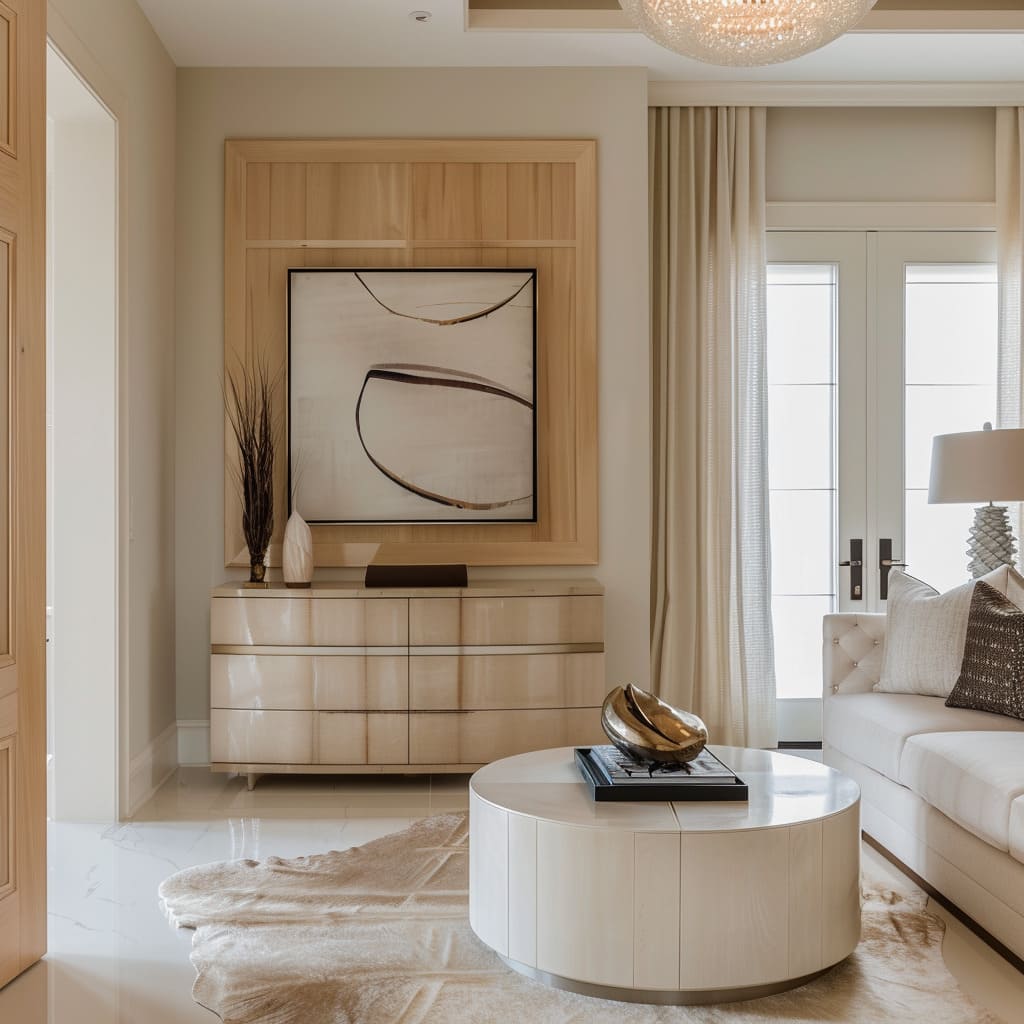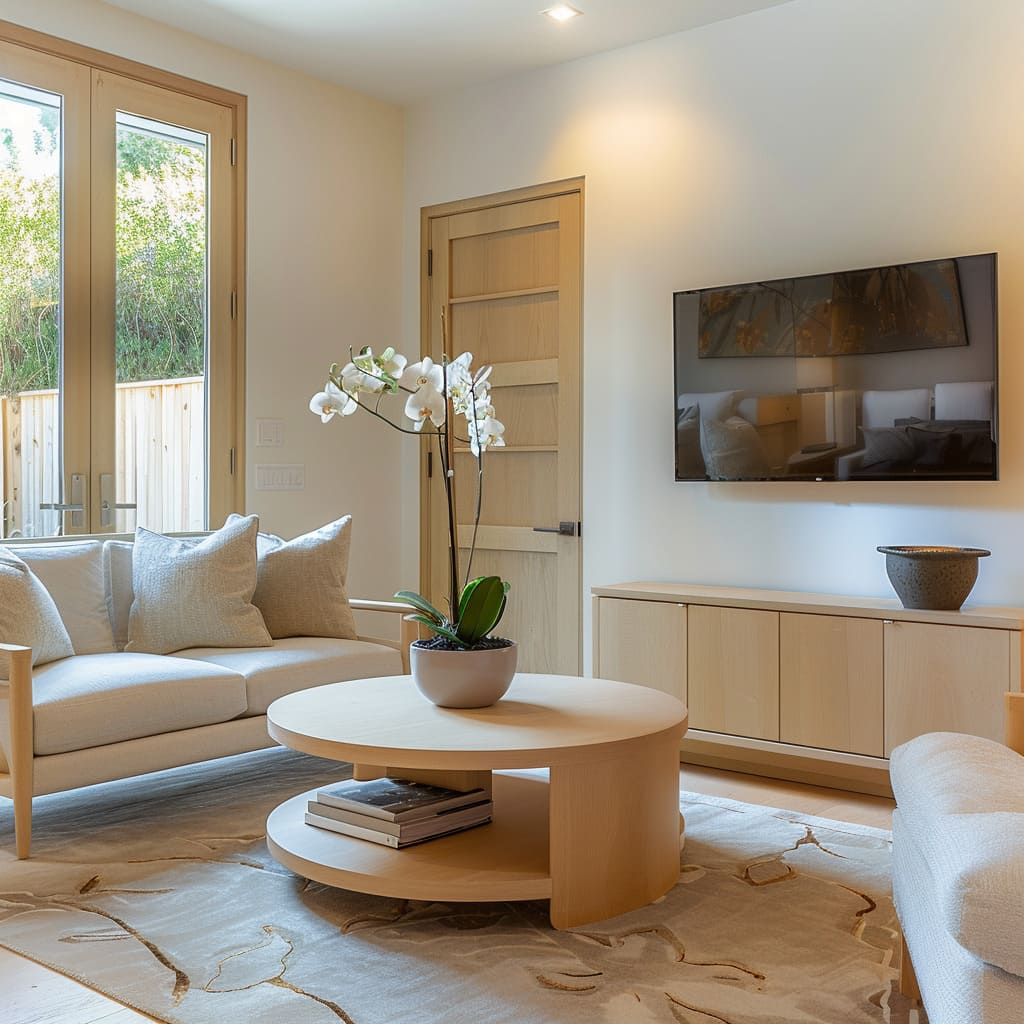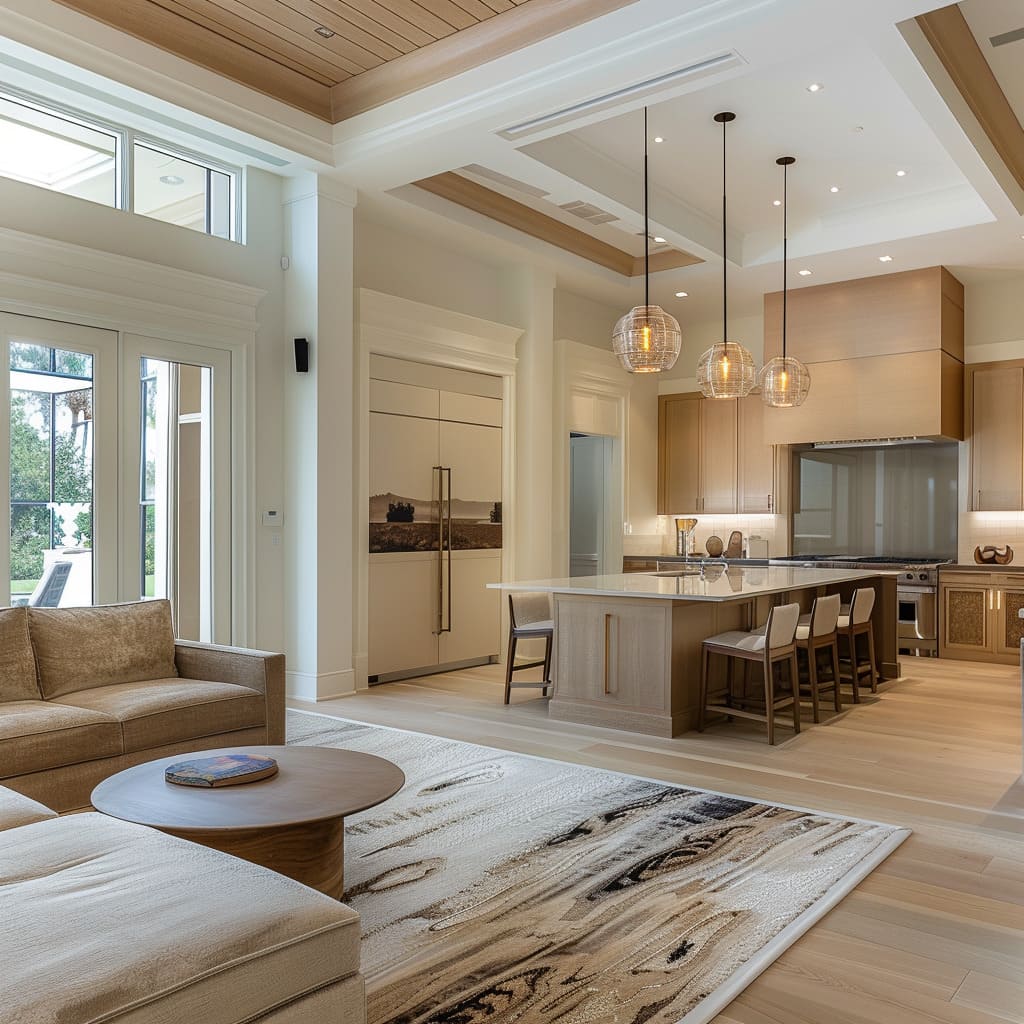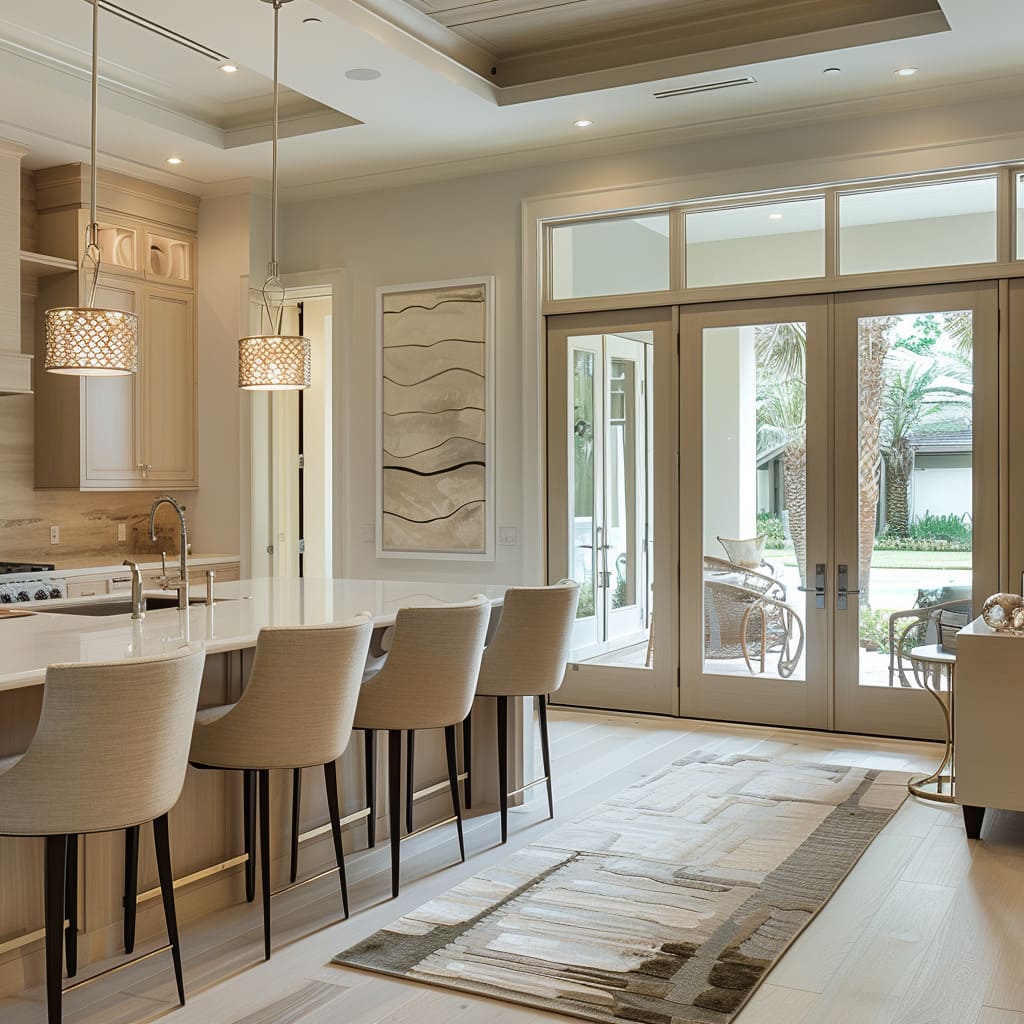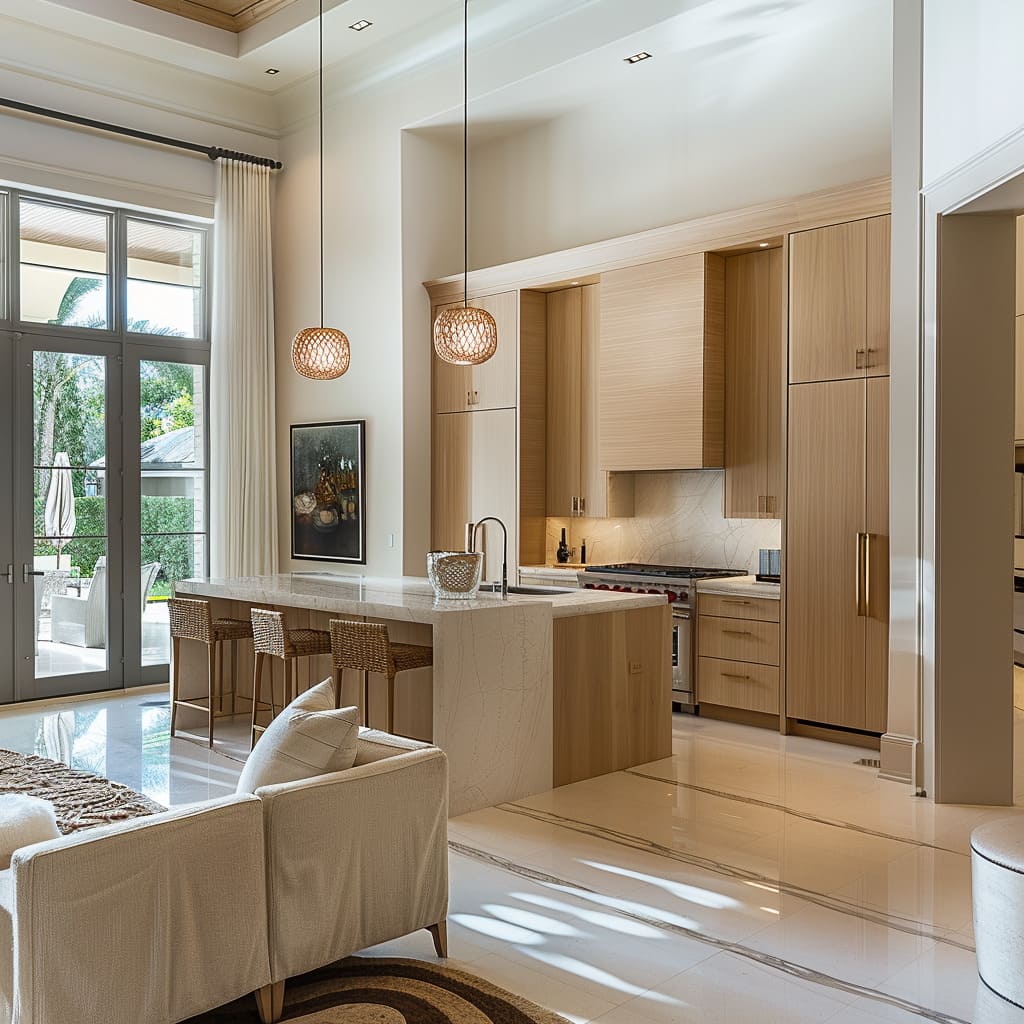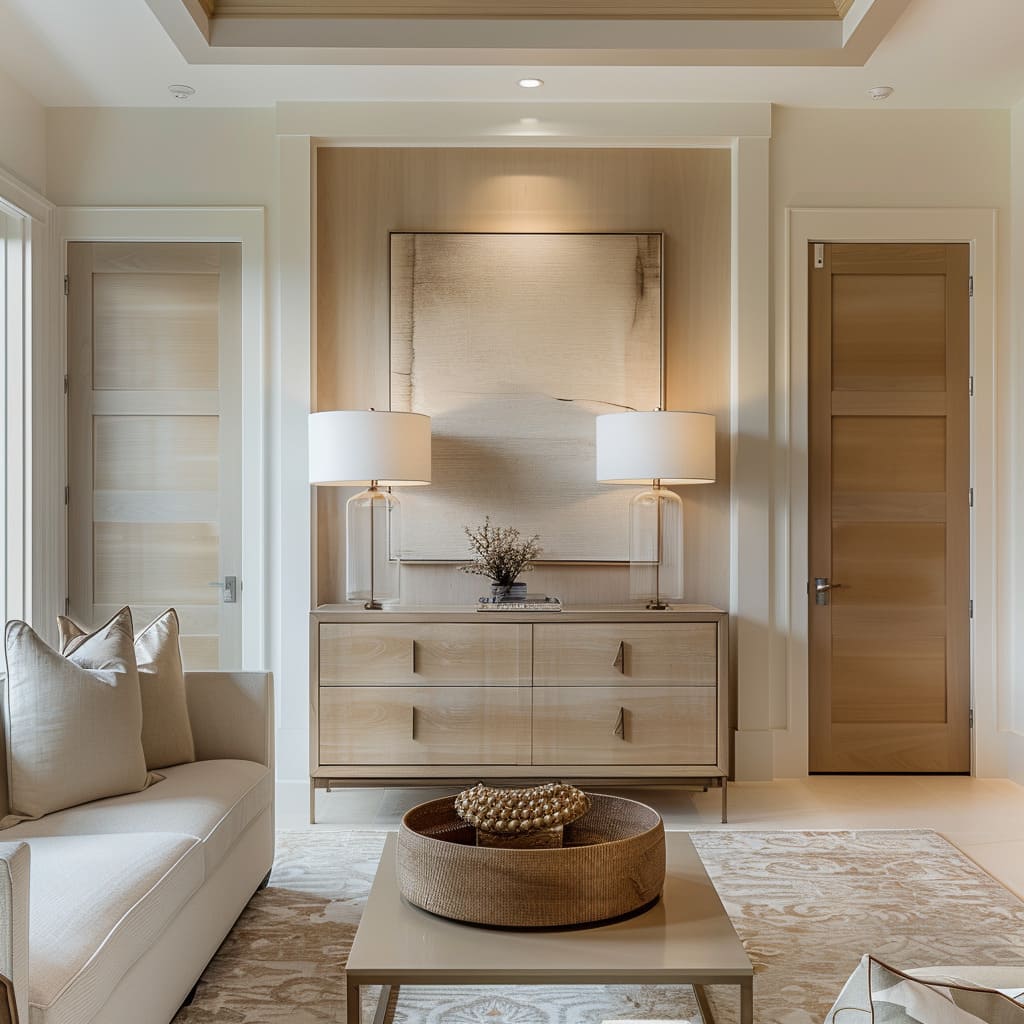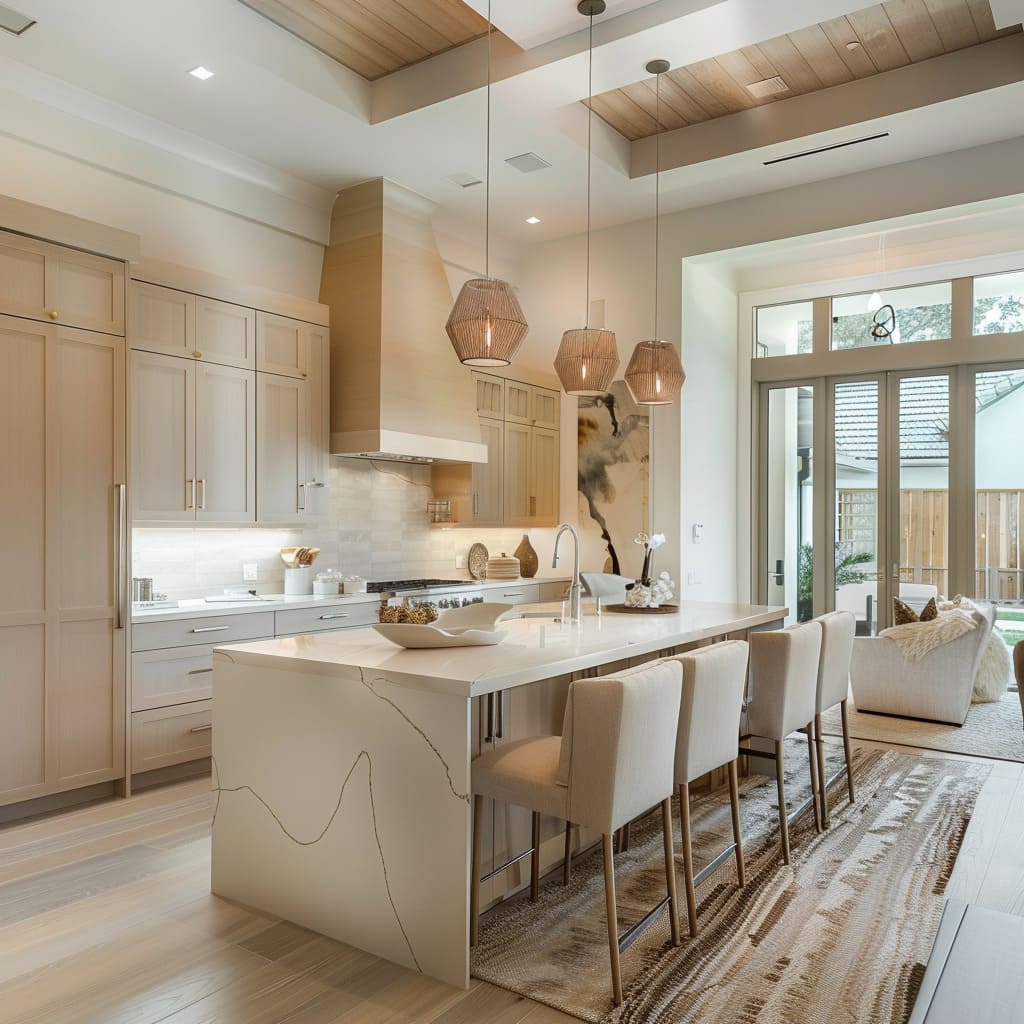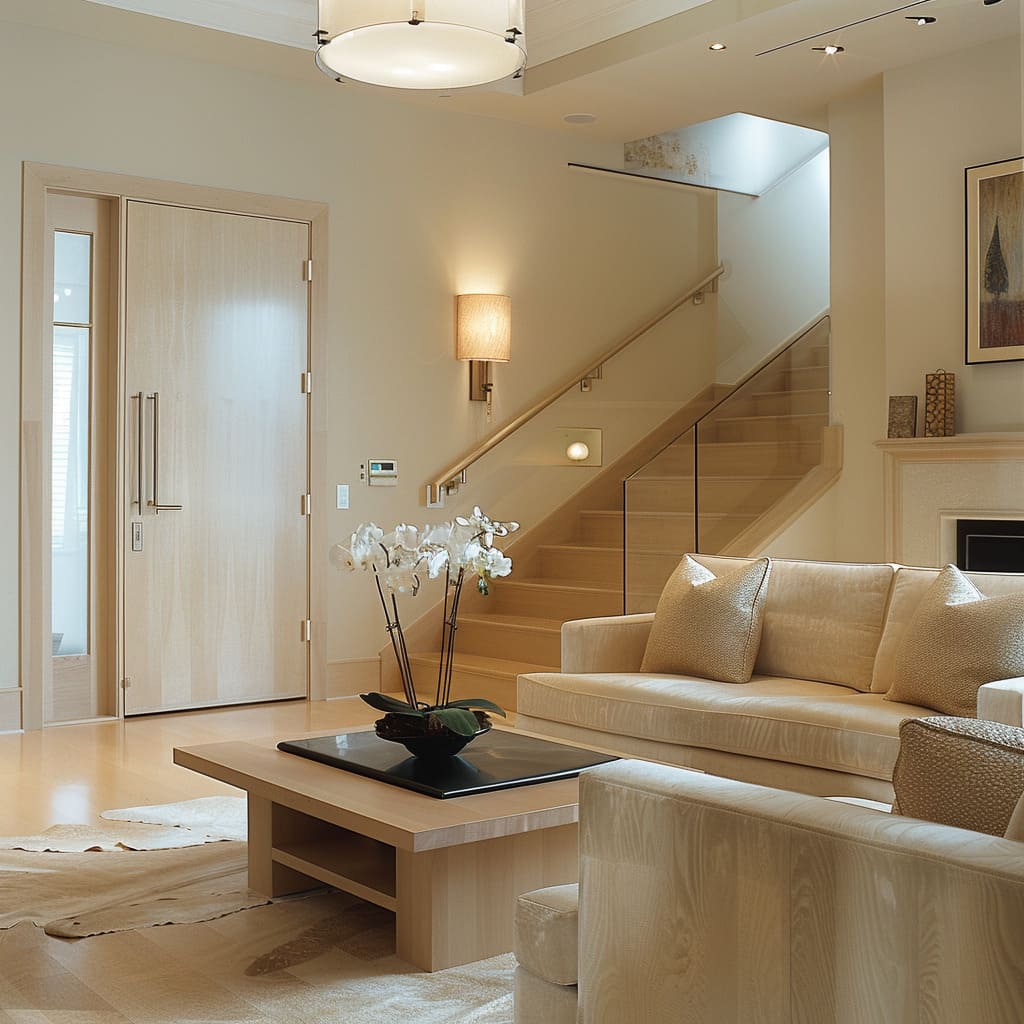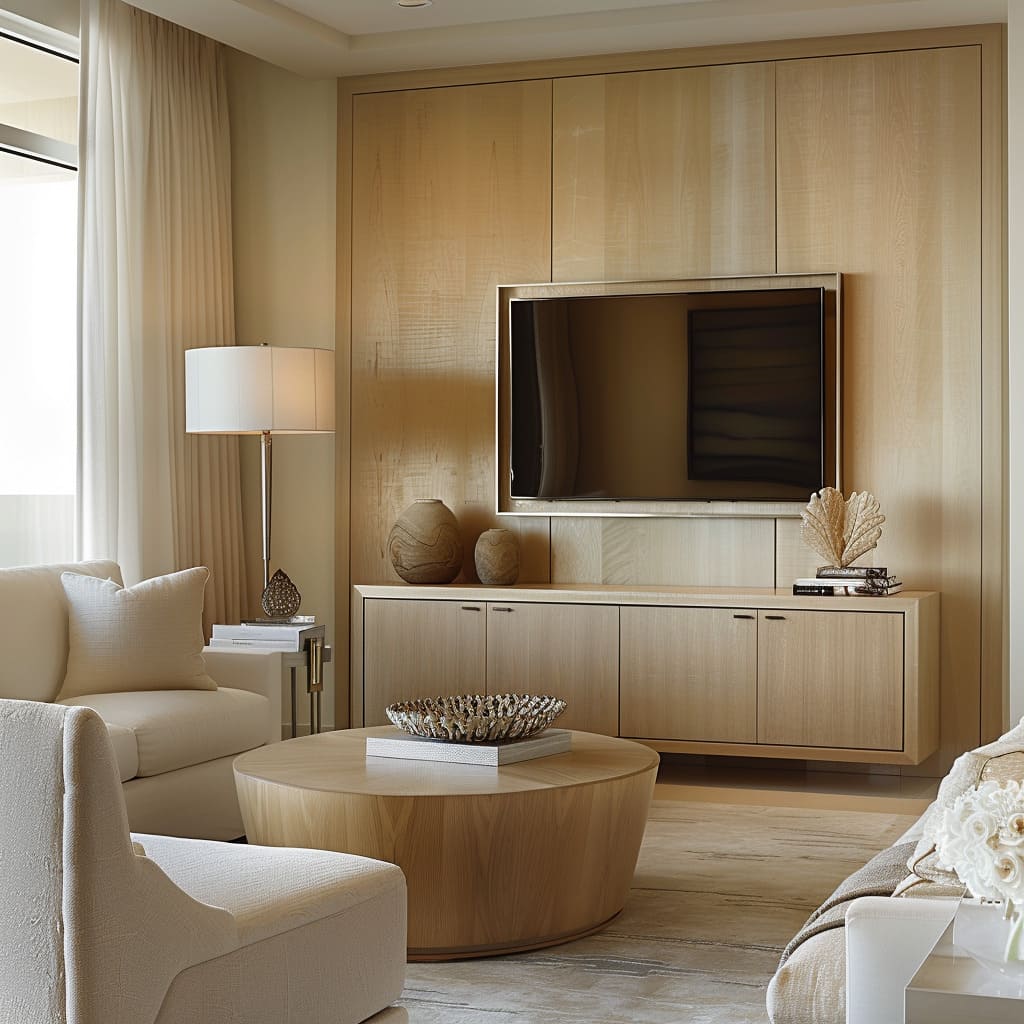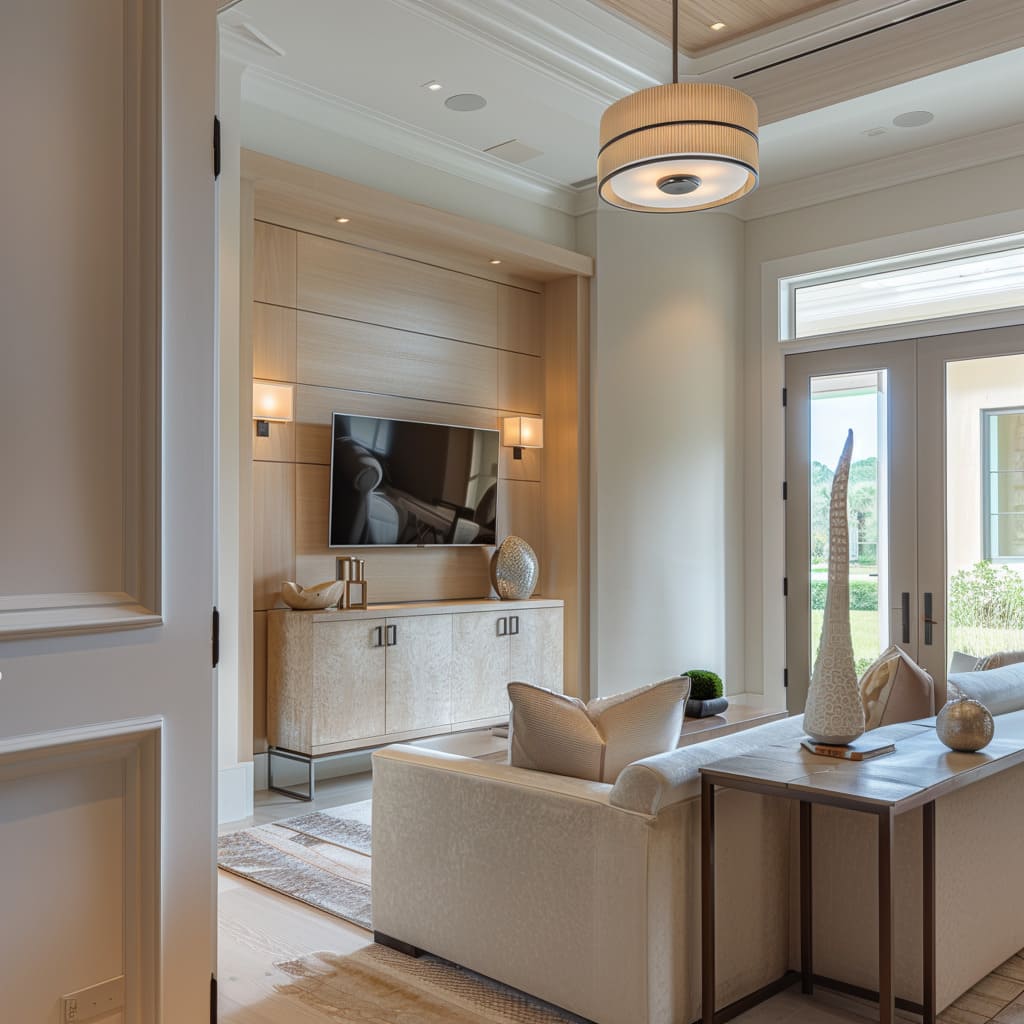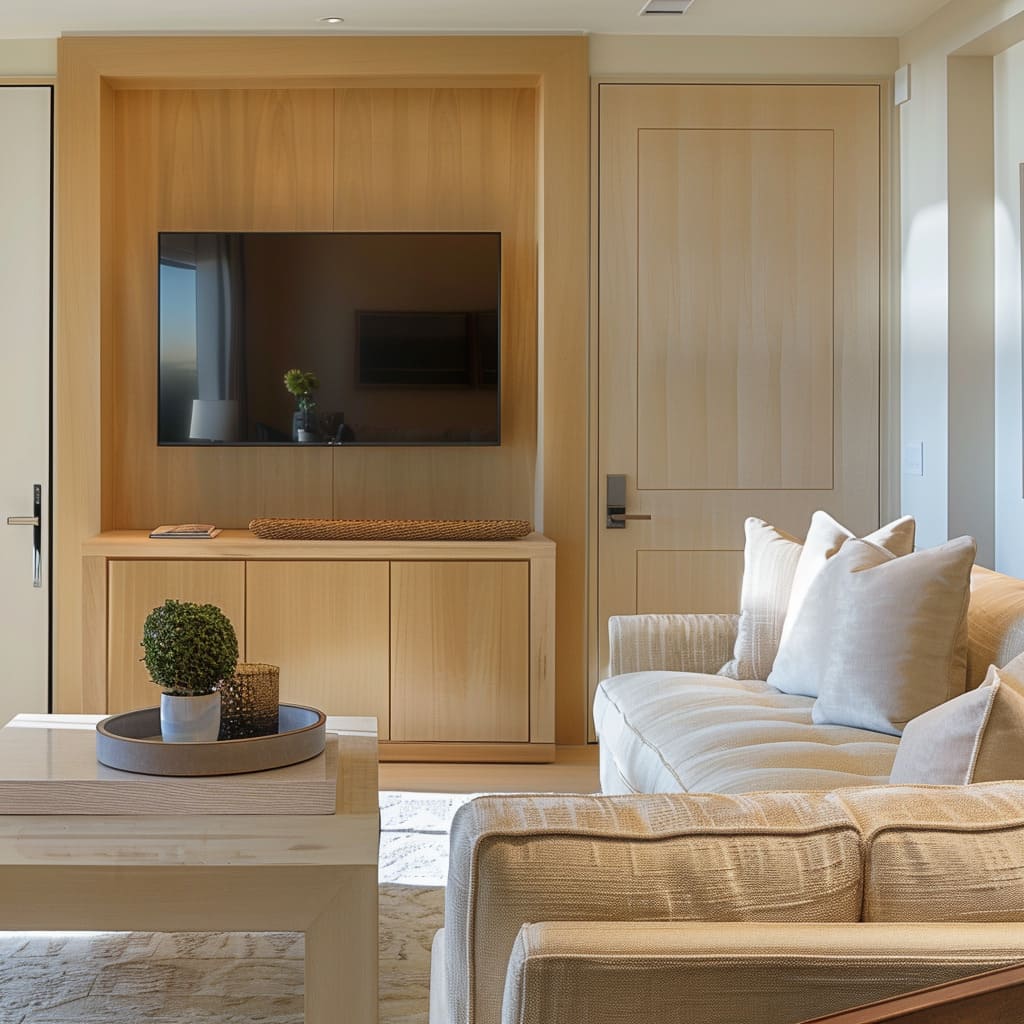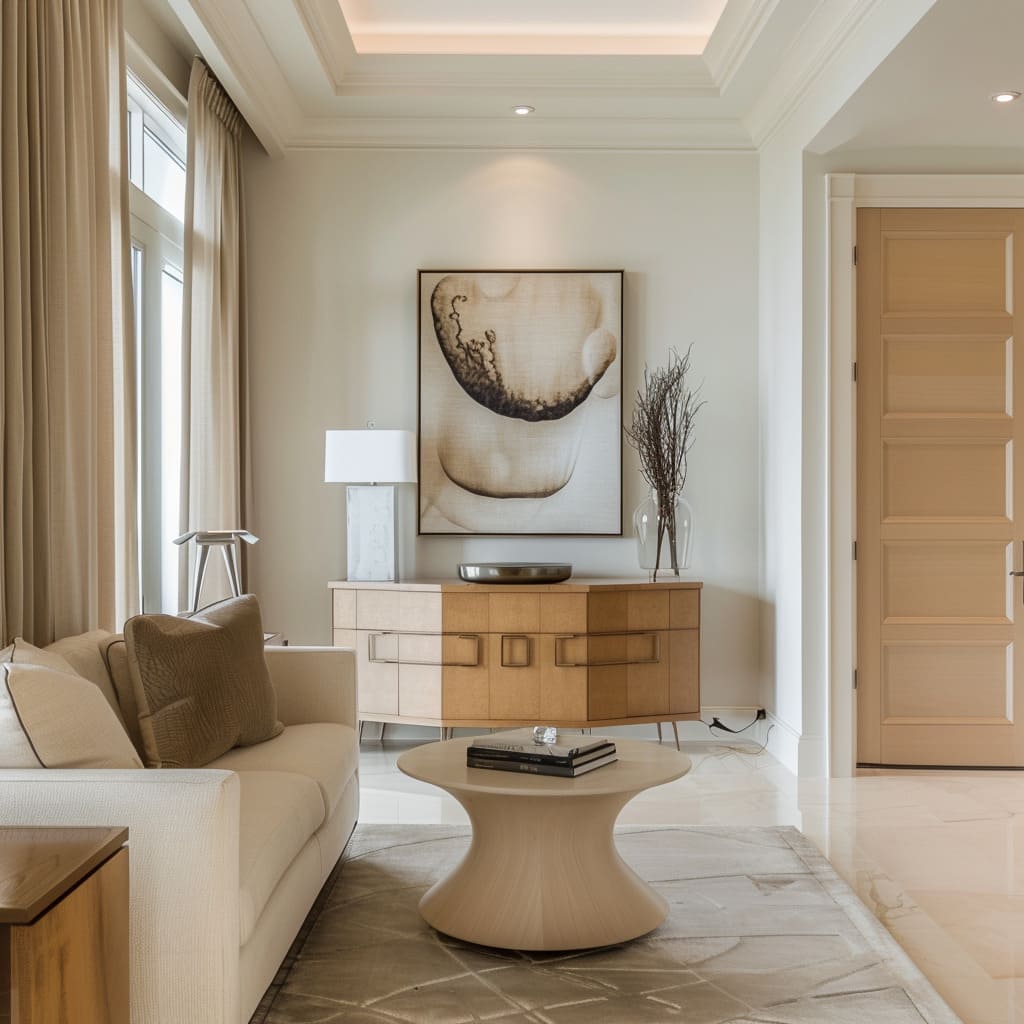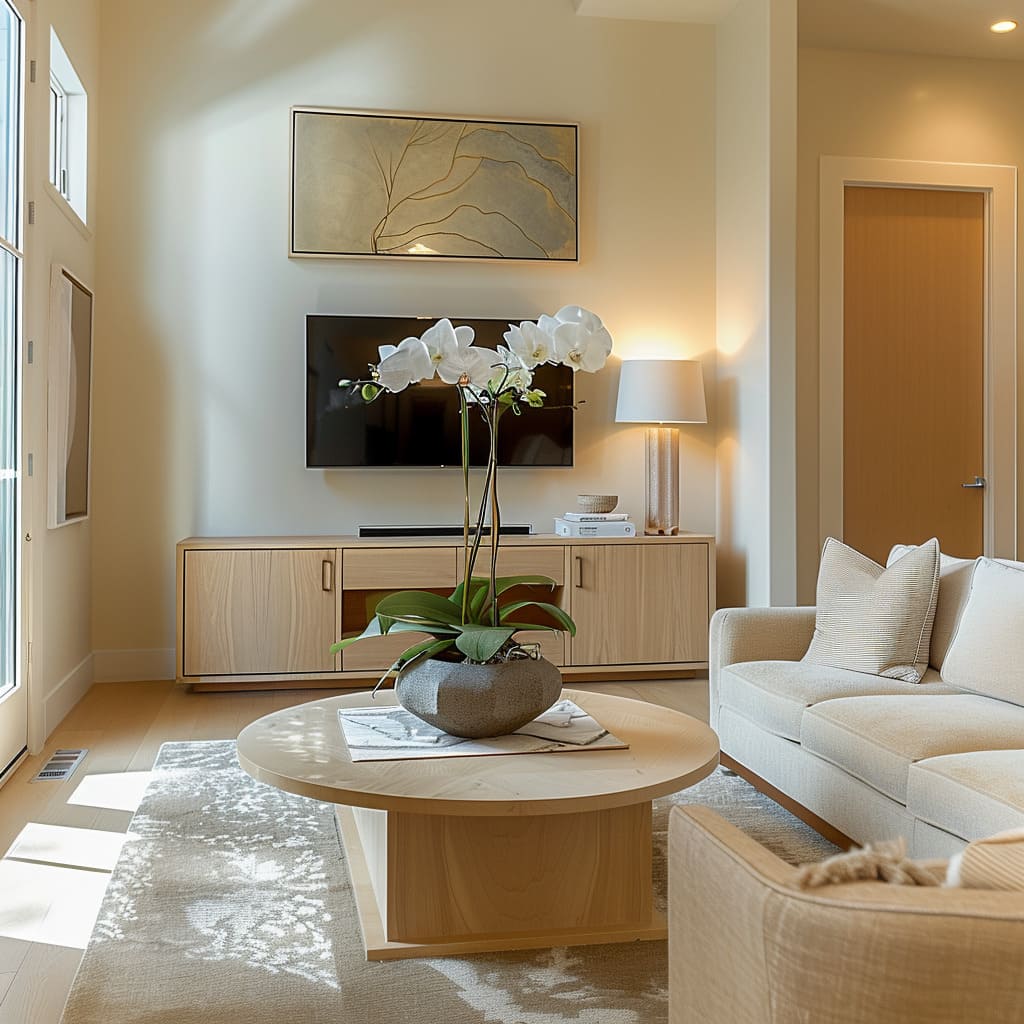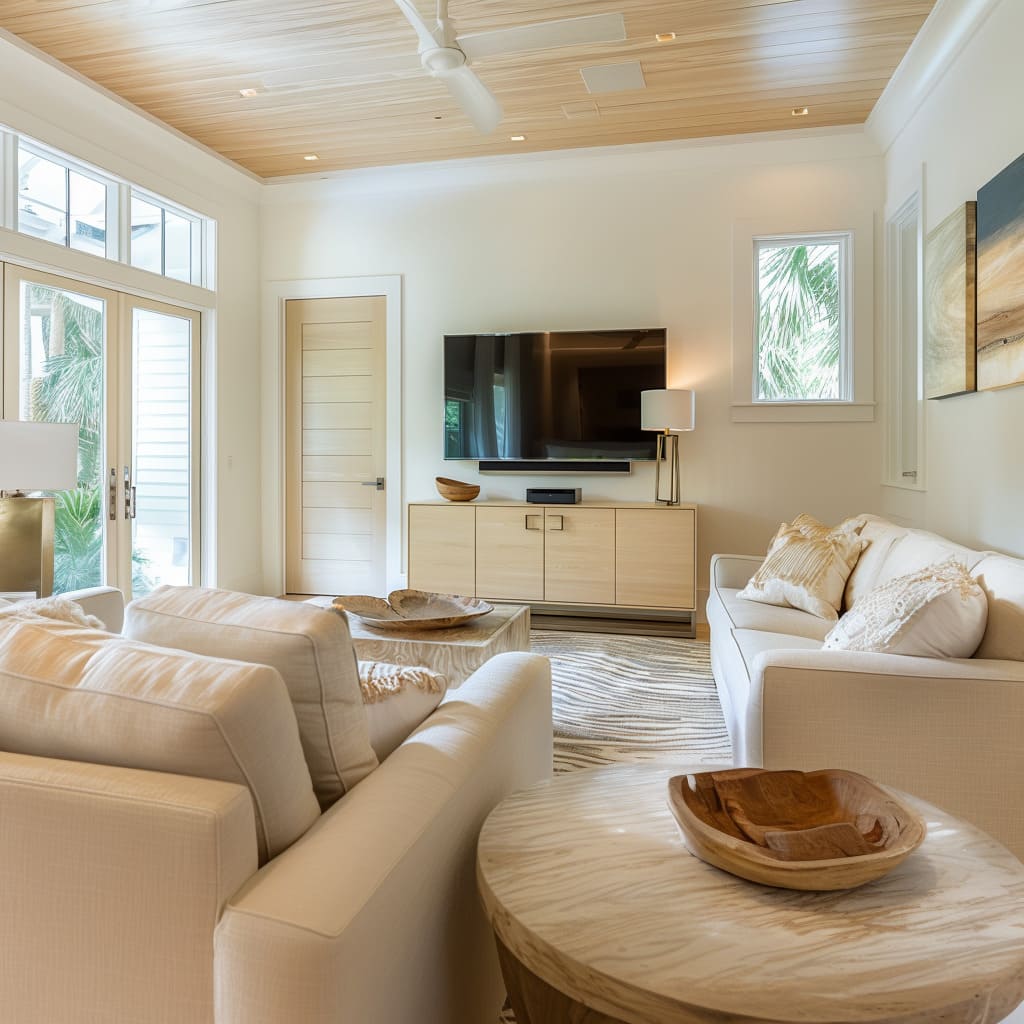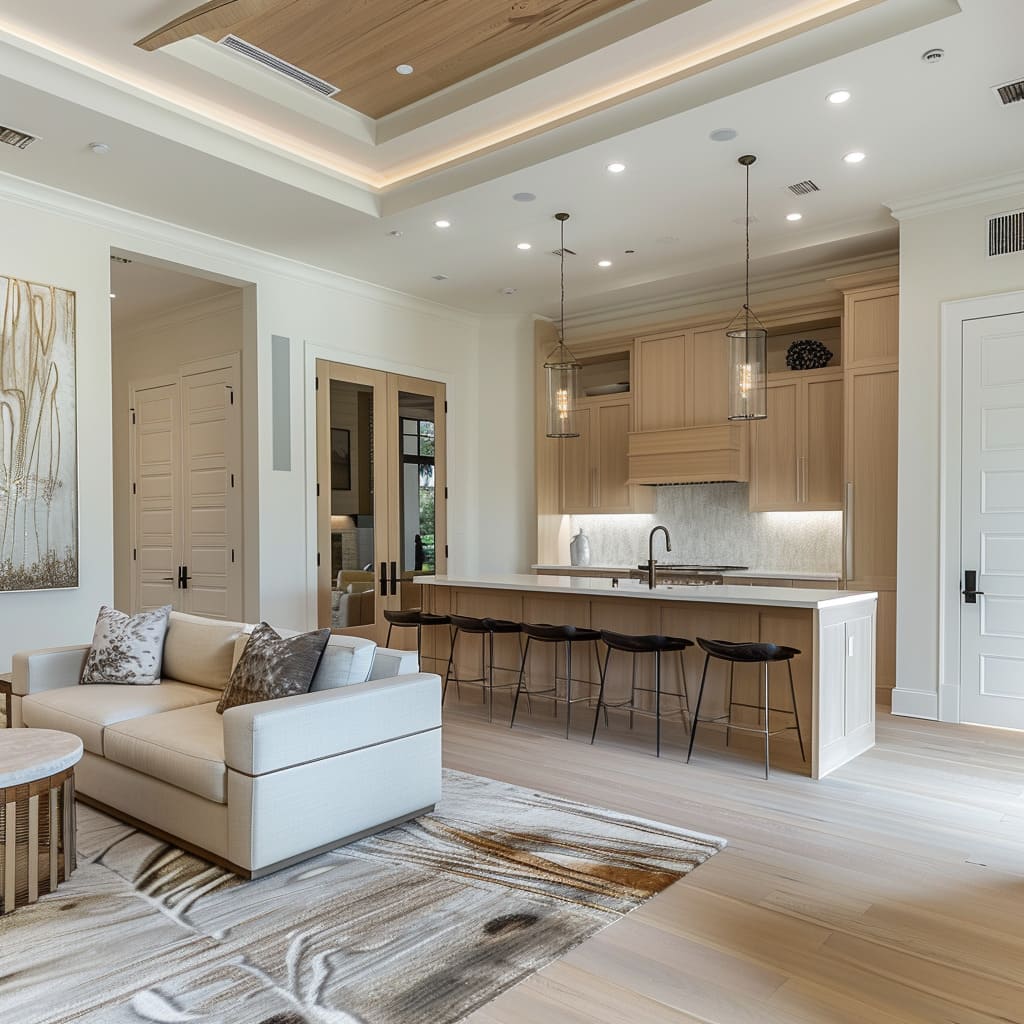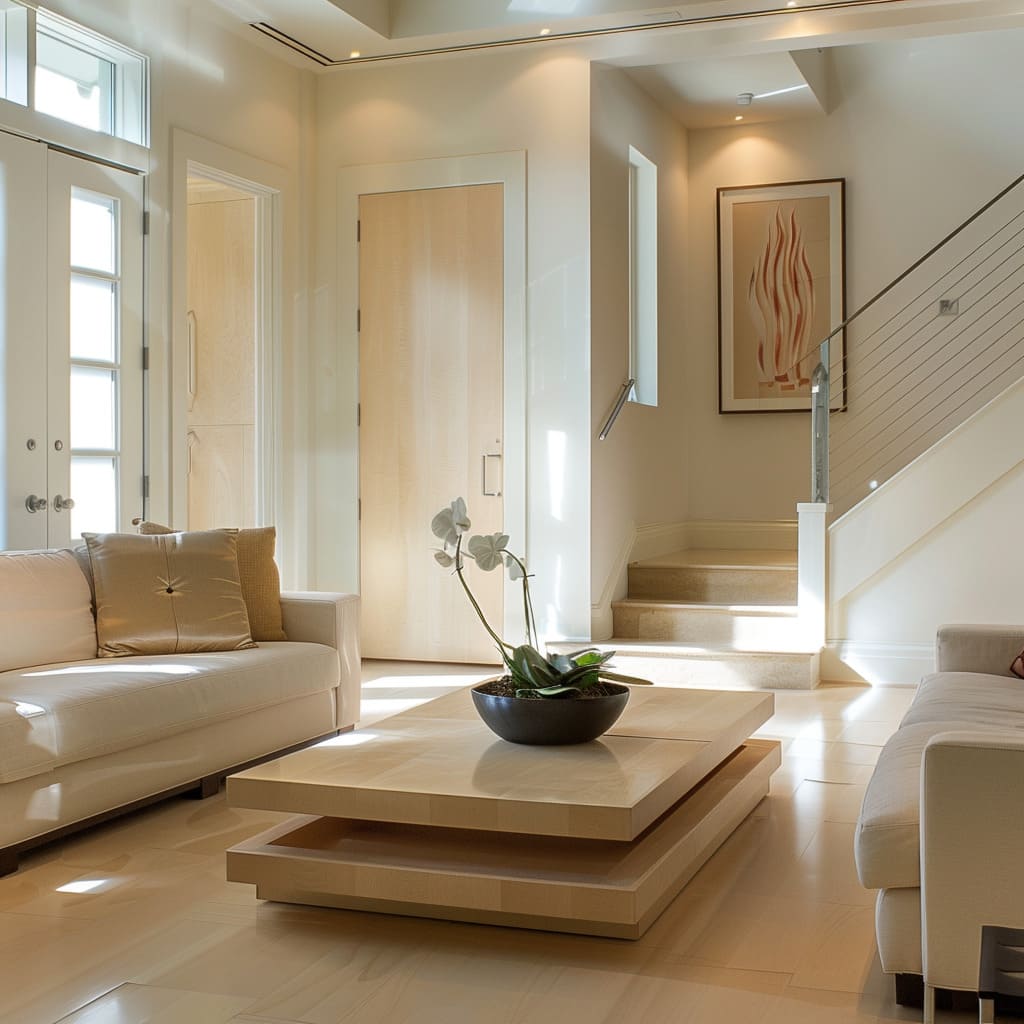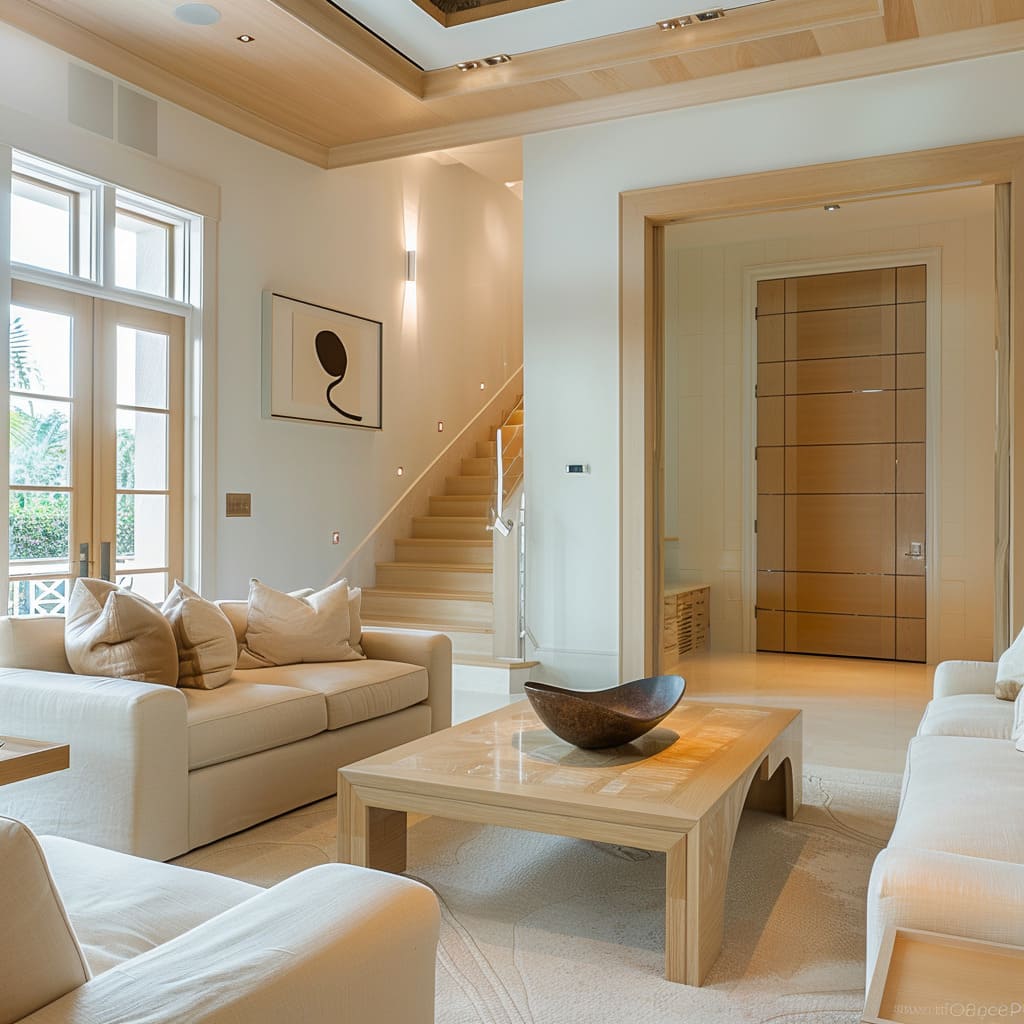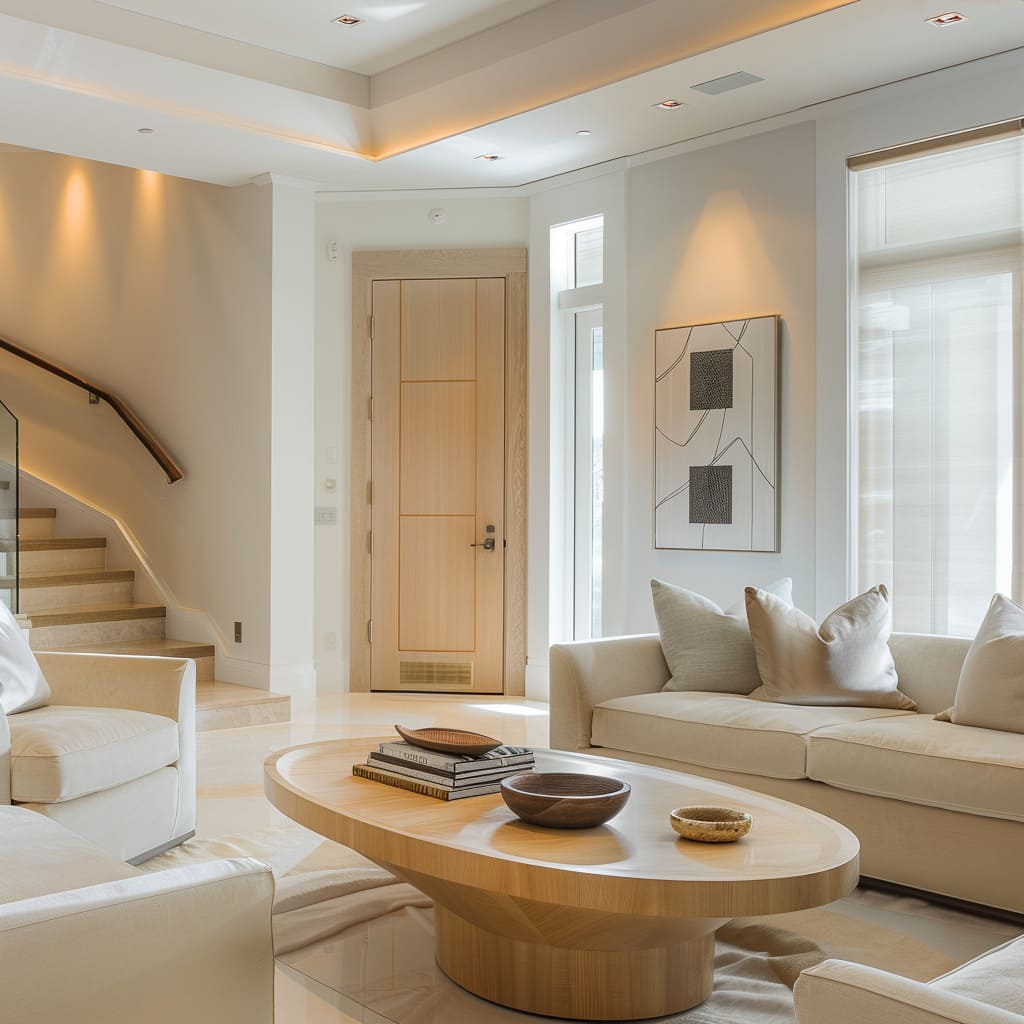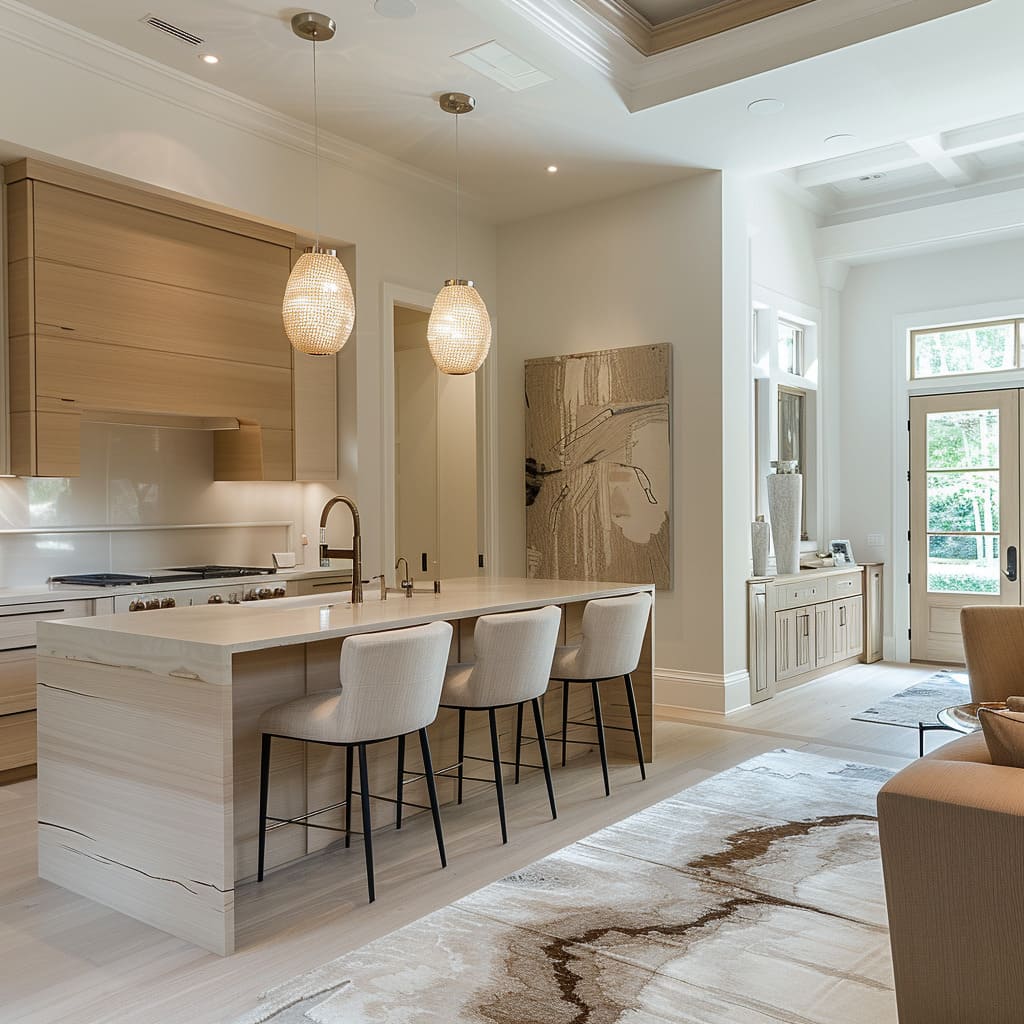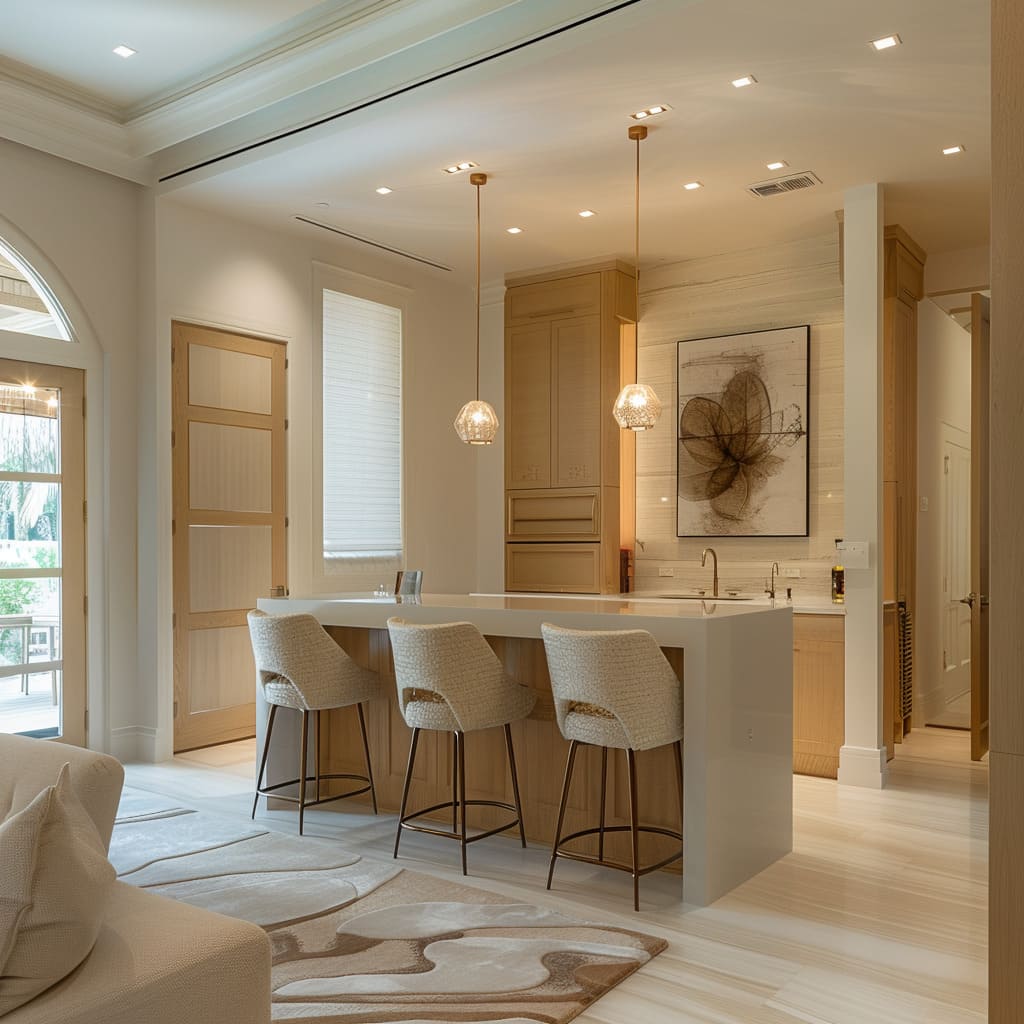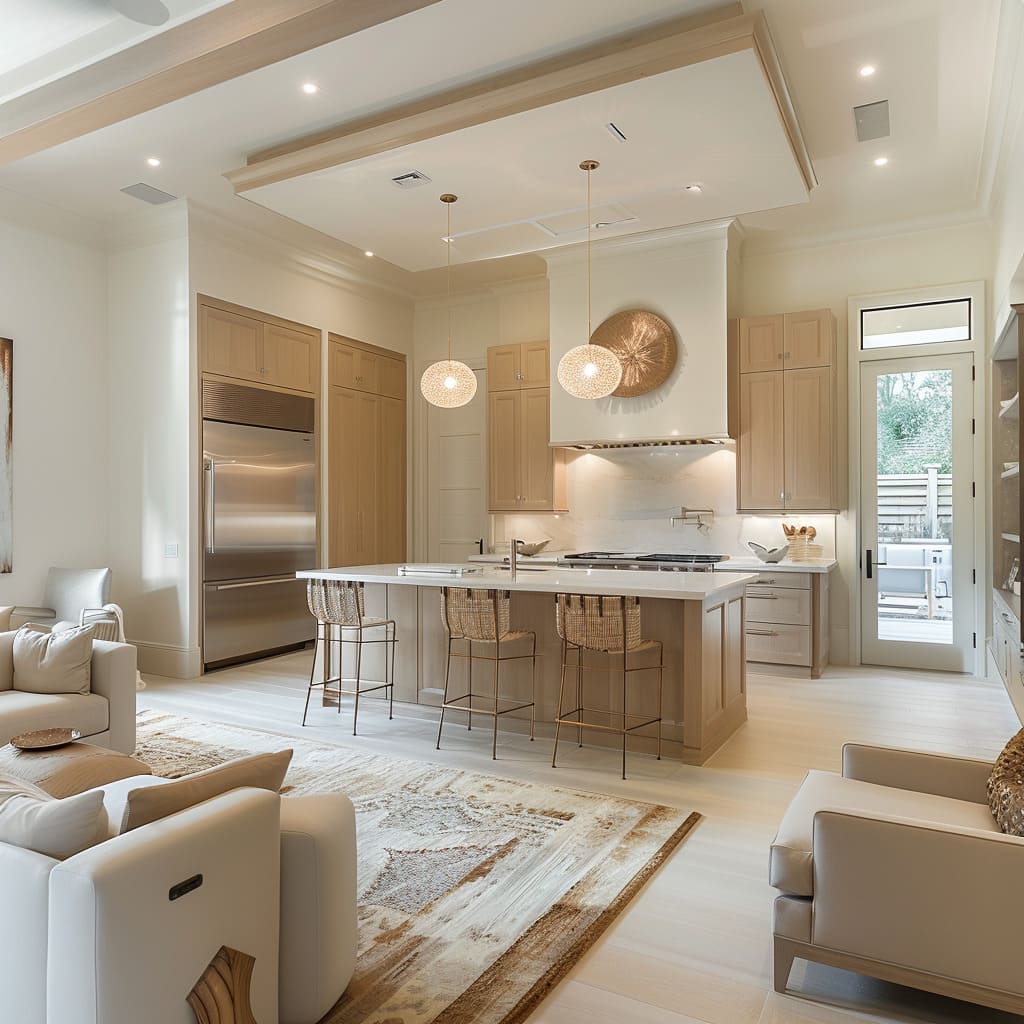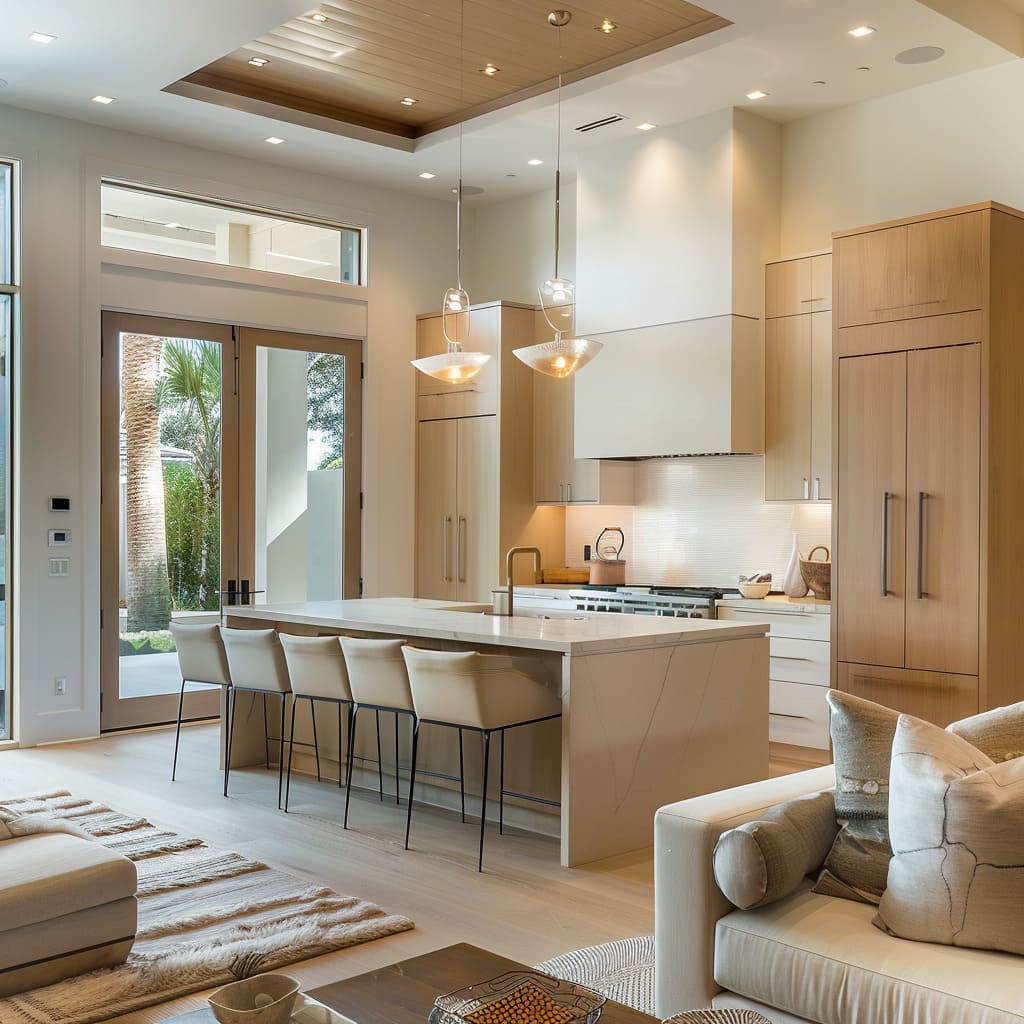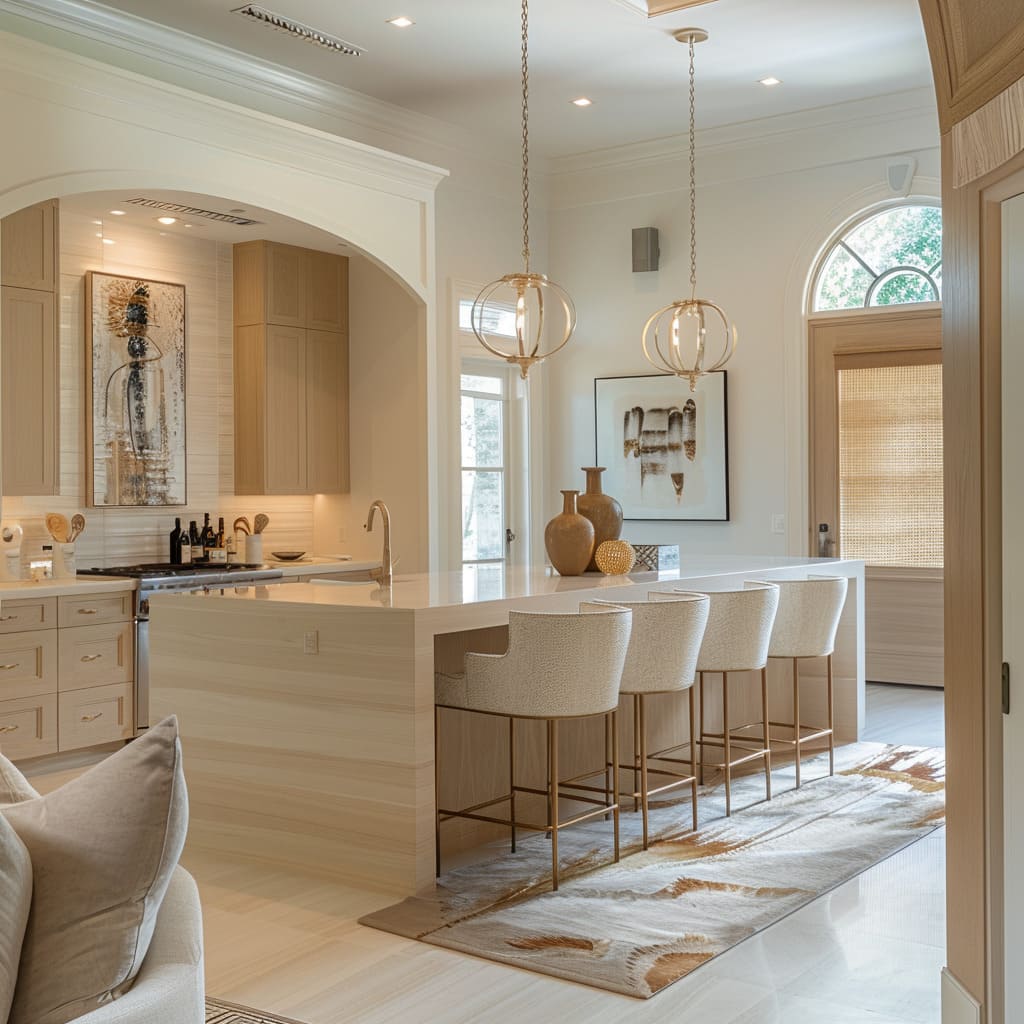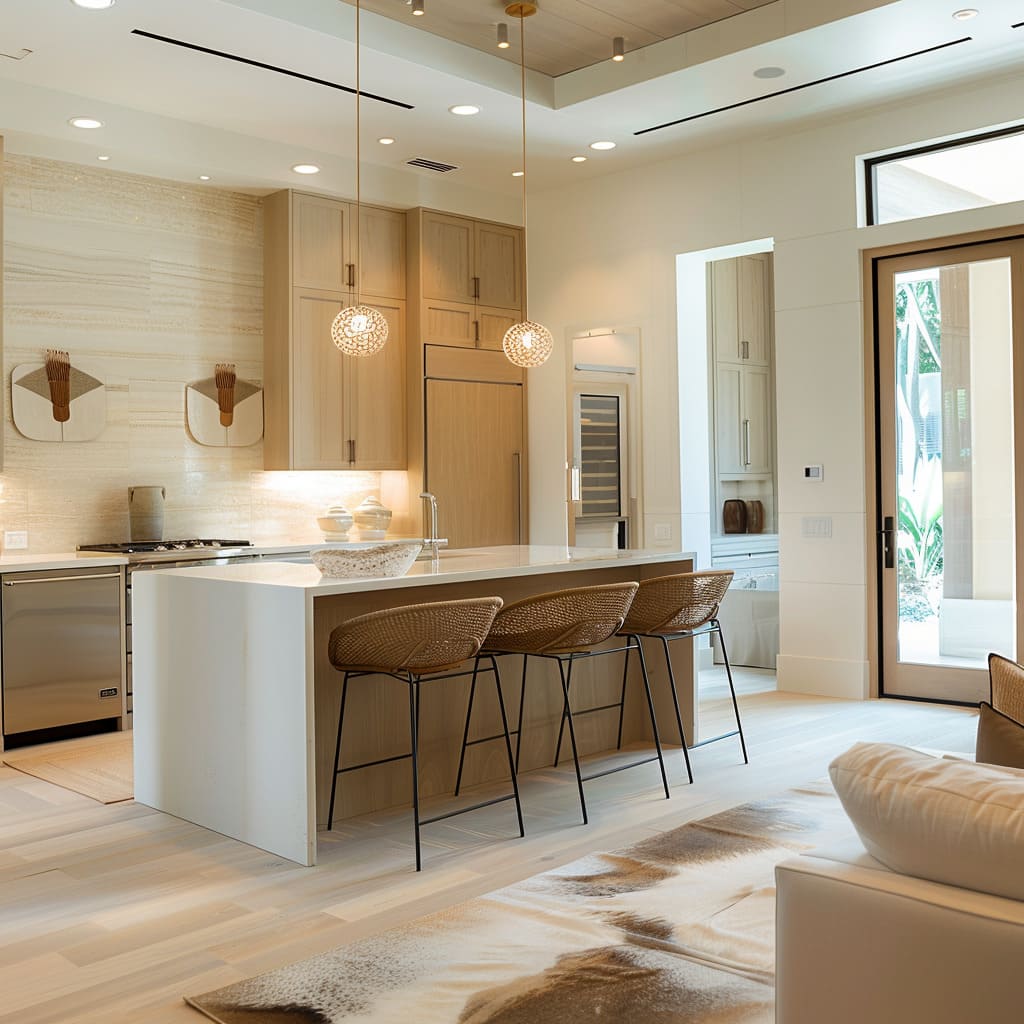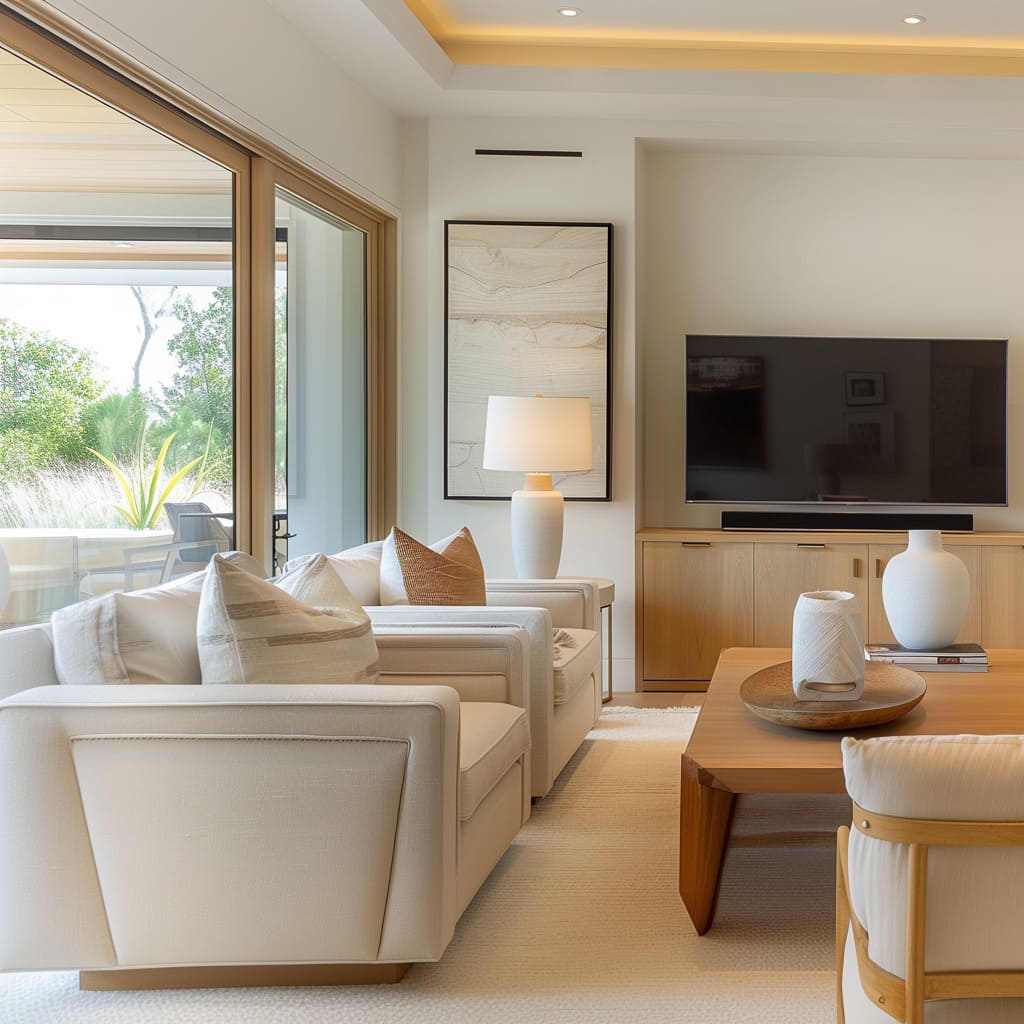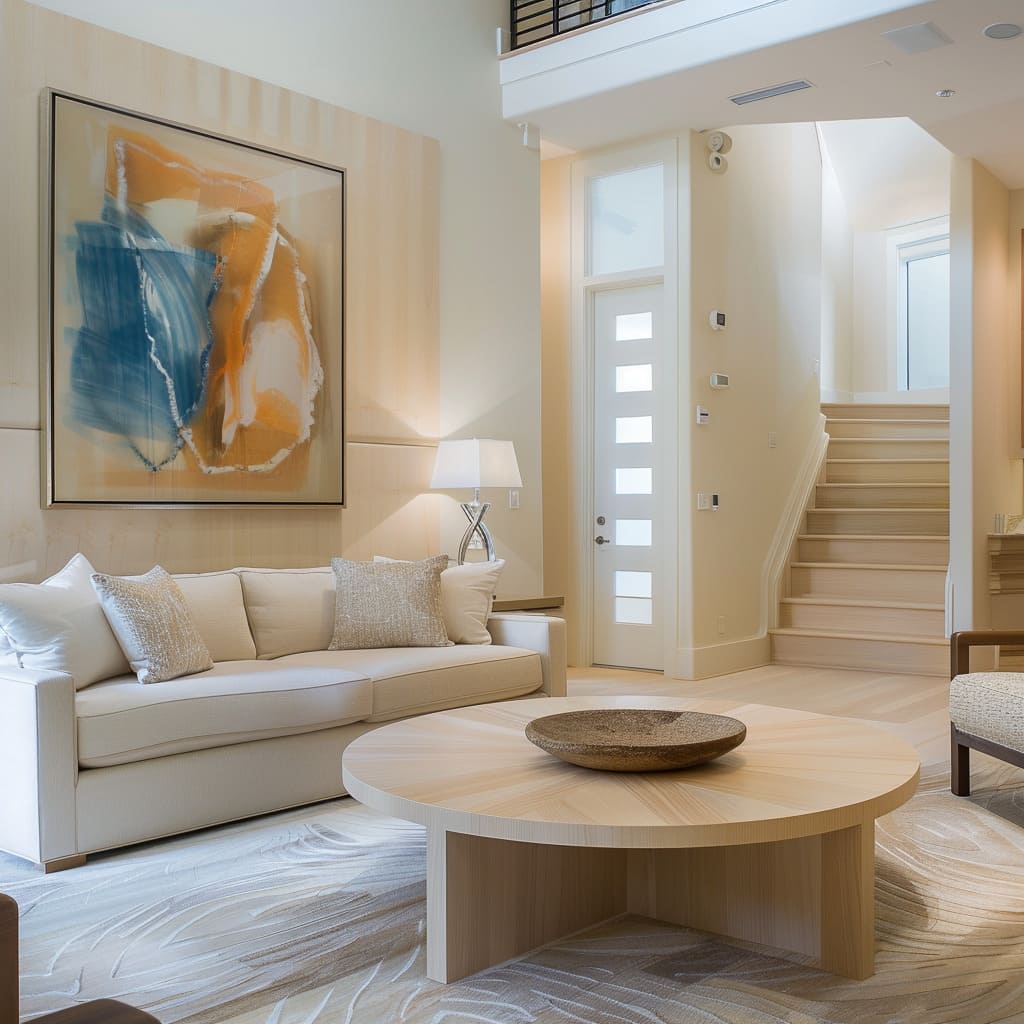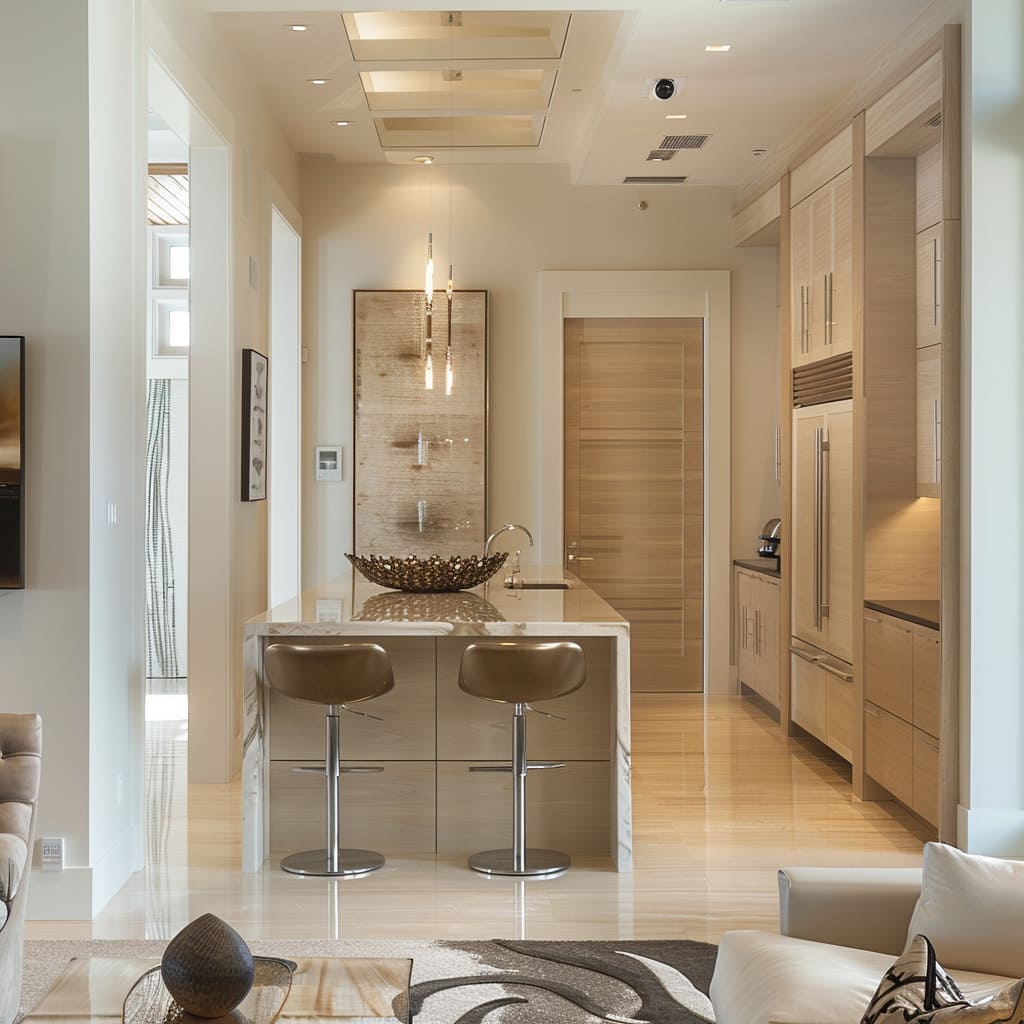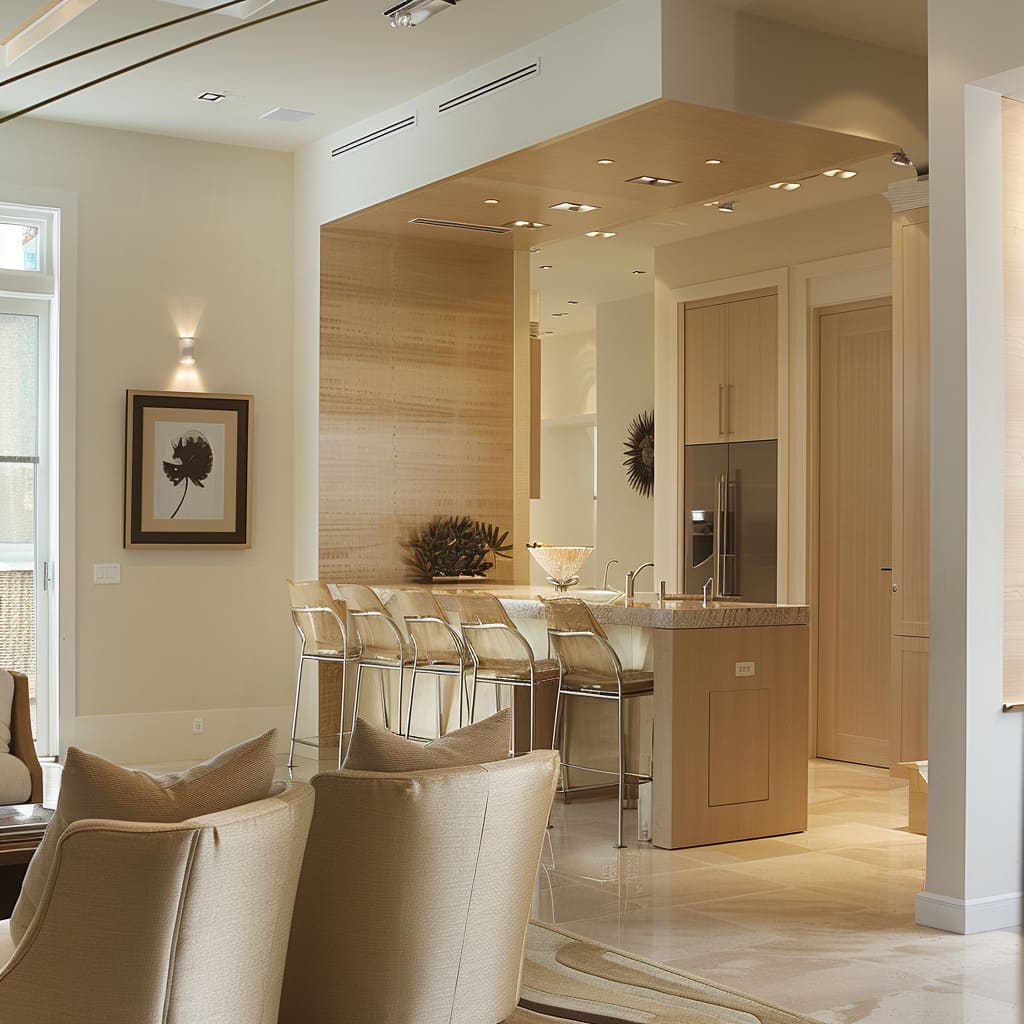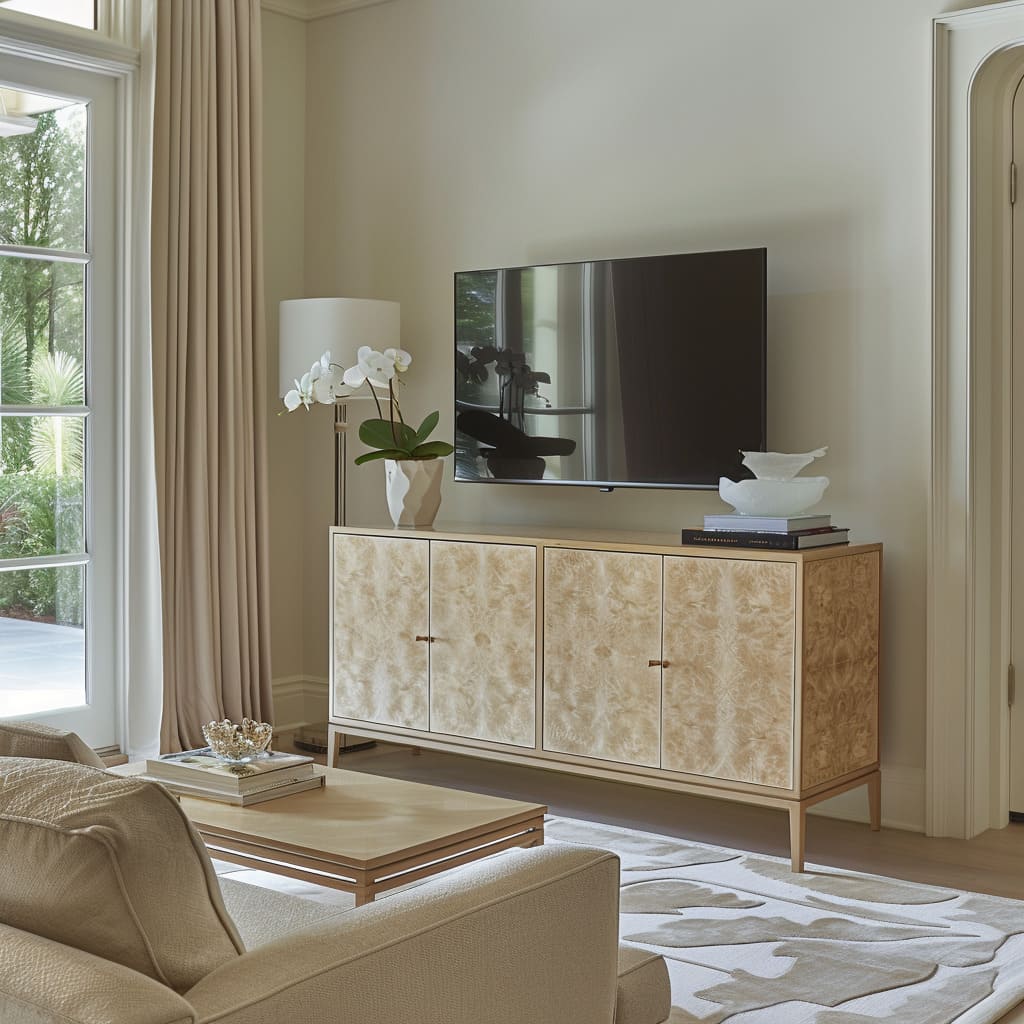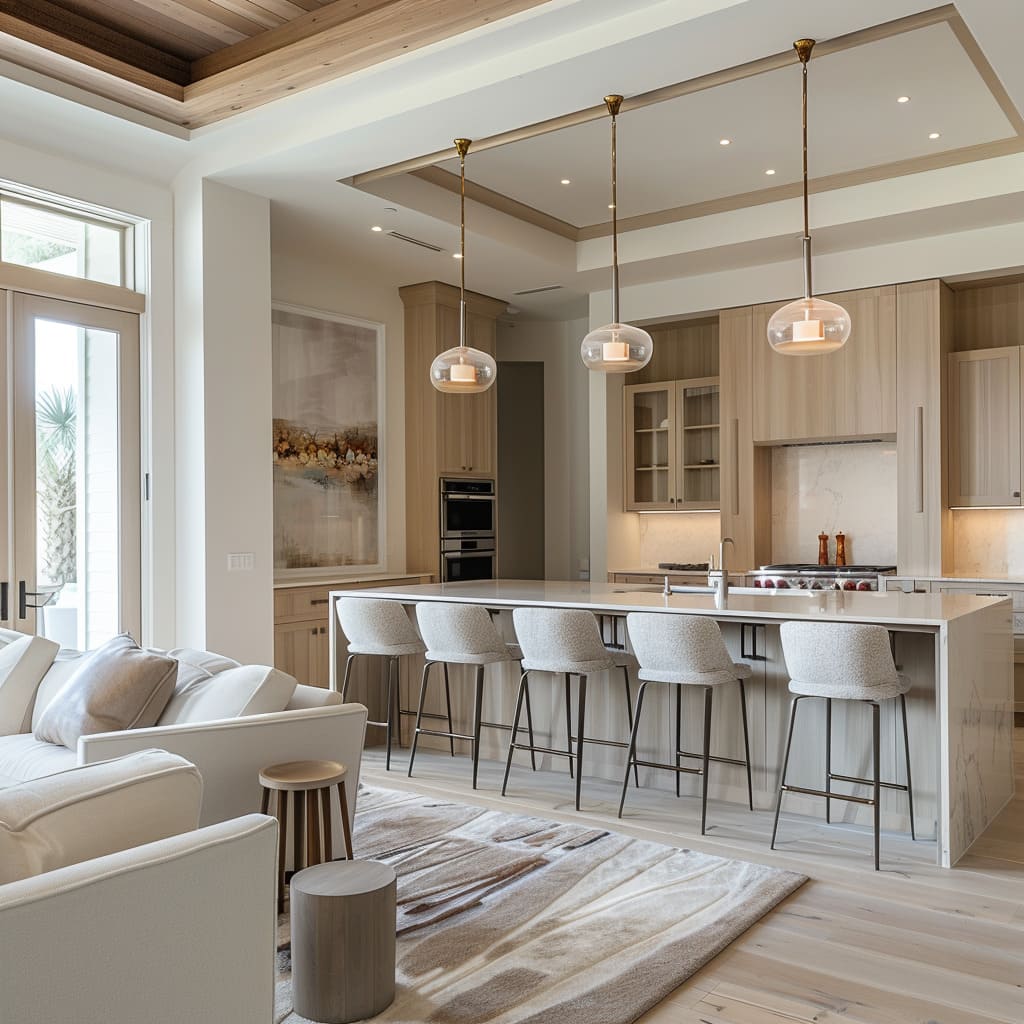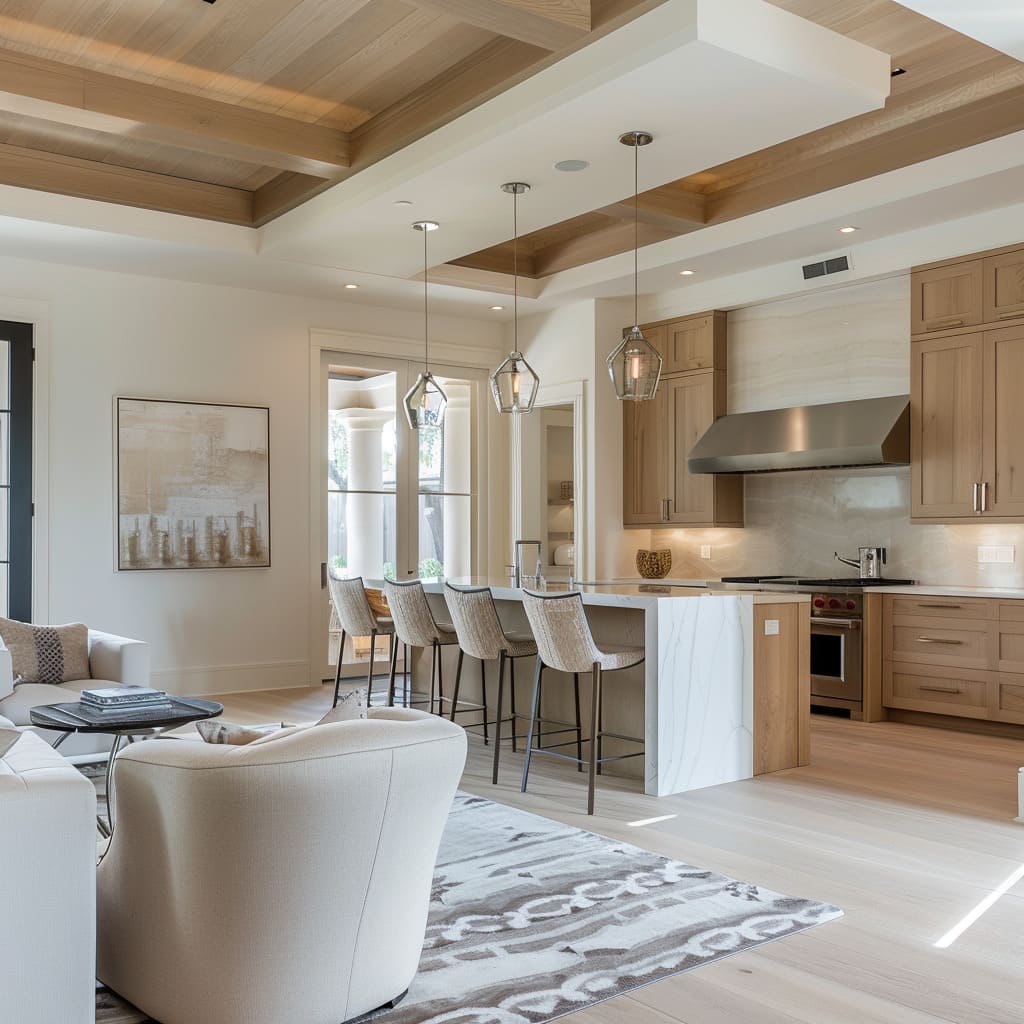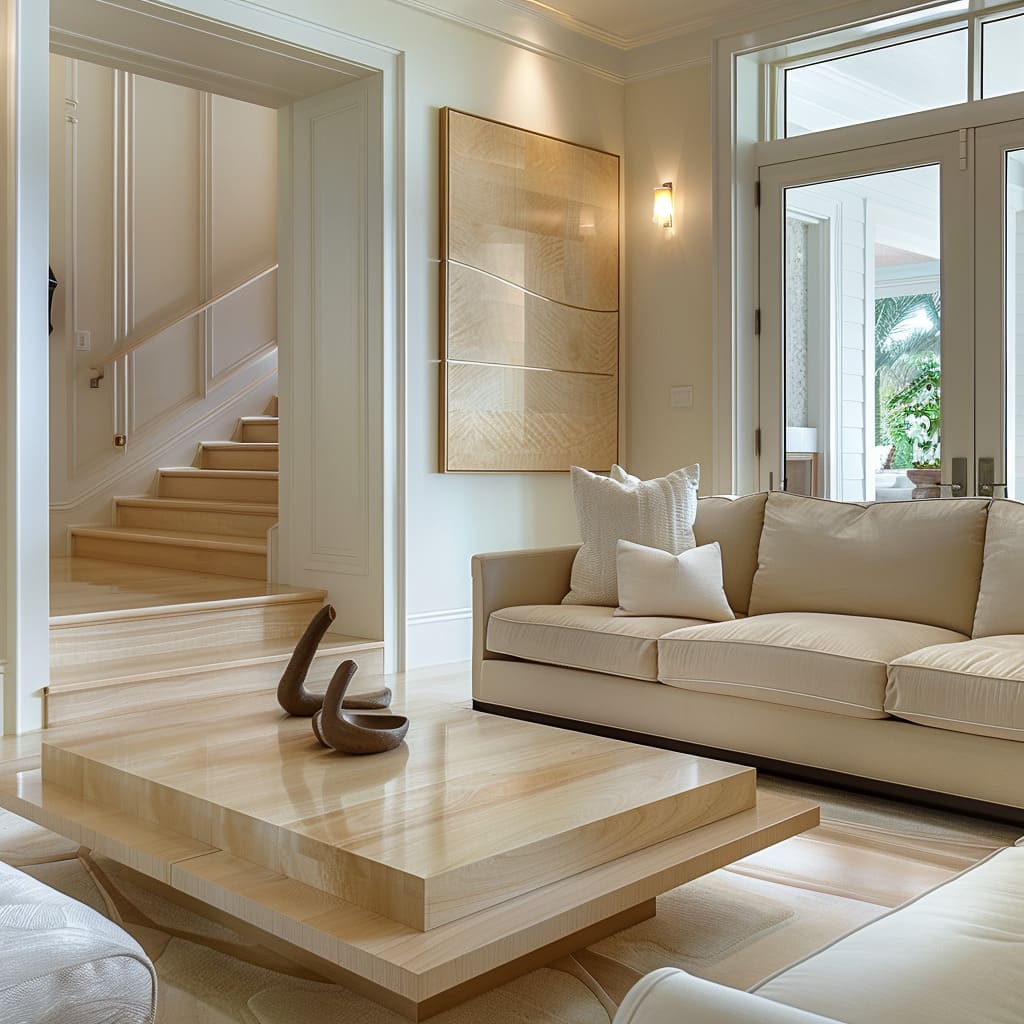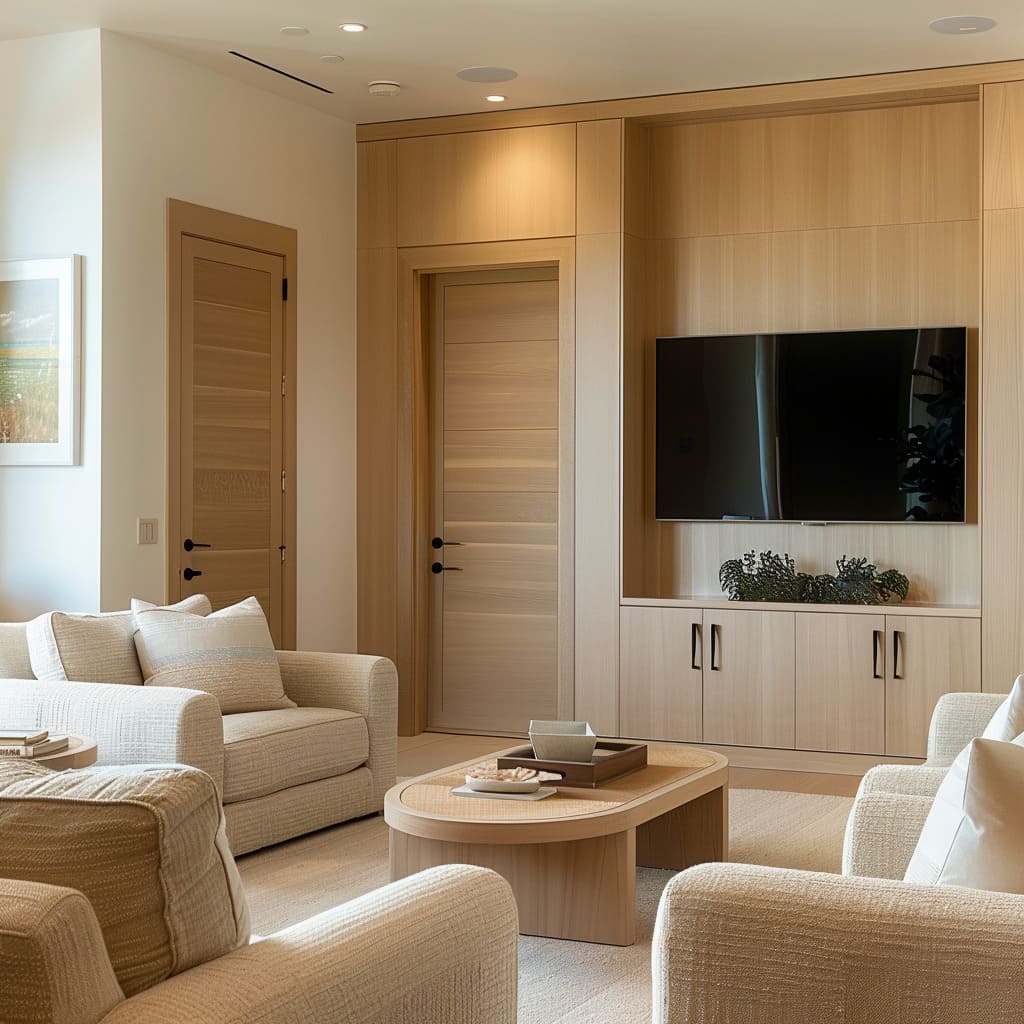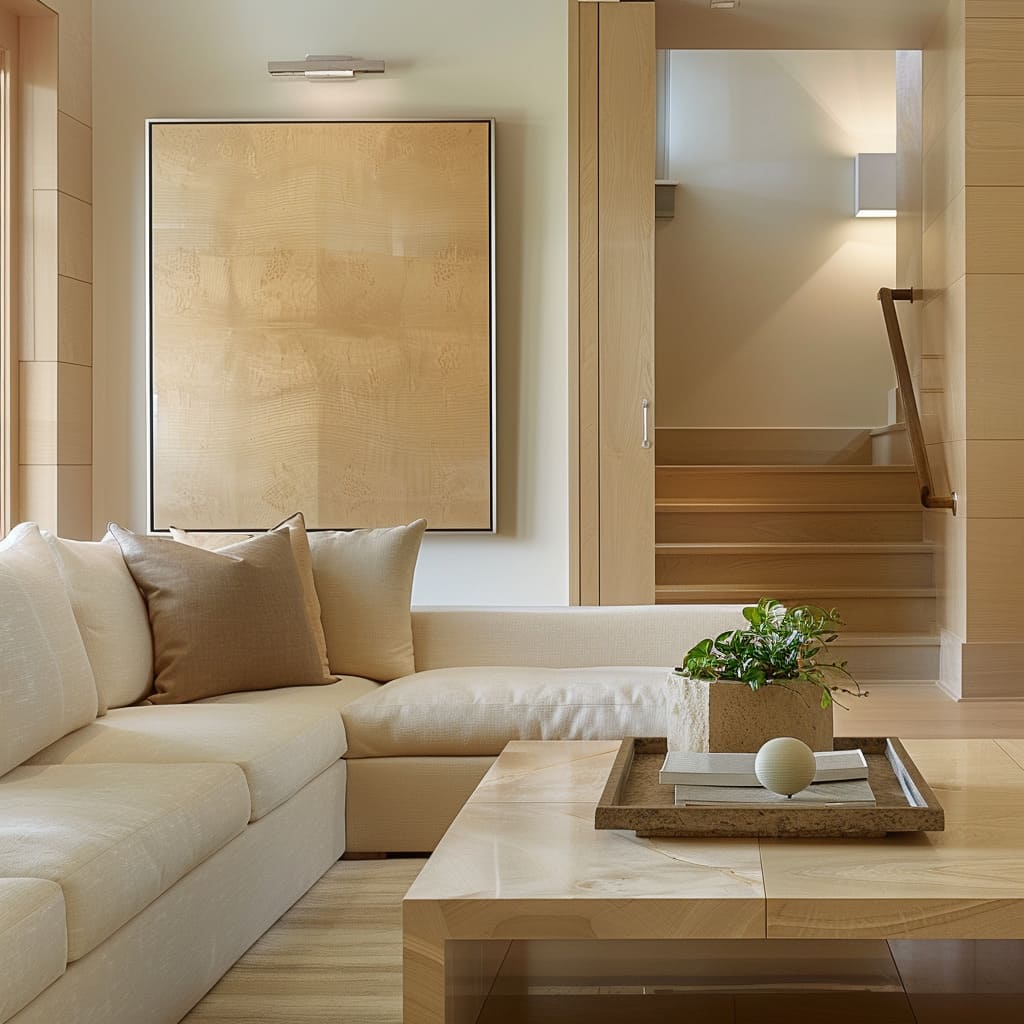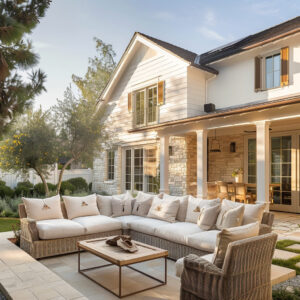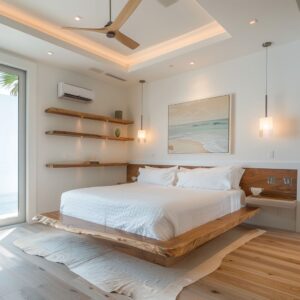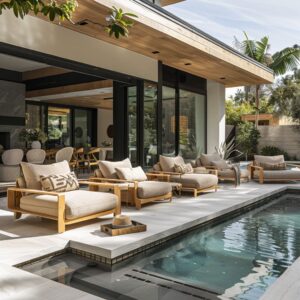Maple wood has long been a favored choice in home interiors, appreciated for its ability to add both warmth and elegance to various spaces. Its appeal lies not just in its durability, but also in its ability to enhance a room’s aesthetic with its fine grain and versatile color.
Whether it’s used in flooring, furniture, or architectural details, maple wood brings a natural touch that suits a wide range of design styles.
One of the key reasons for maple wood’s popularity is its natural beauty. The wood’s fine, subtle grain and light color can range from creamy white to a warm, golden hue, making it adaptable to different design themes.
This versatility allows maple wood to complement everything from contemporary spaces to more traditional settings. Additionally, its smooth texture and even grain make it an ideal candidate for staining or finishing, allowing homeowners to customize the appearance to match their specific taste.
Beyond its visual appeal, maple wood is also highly practical. It is a hardwood, known for its strength and resilience, which makes it particularly suitable for high-traffic areas like kitchens and hallways.
Its density and durability ensure that it can withstand daily wear and tear, maintaining its beauty over time. Moreover, maple wood’s low maintenance requirements make it a practical choice for busy households.
A simple routine of dusting and occasional polishing is usually sufficient to keep maple wood surfaces looking their best.
Understanding Maple Wood
What is Maple Wood?
Maple wood is sourced from the maple tree, known for its sturdy and dense wood. The characteristics that make maple wood stand out include its fine, uniform grain and its smooth, consistent texture. This wood is often chosen for its light color, which can range from nearly white to a pale golden-brown, making it a versatile option for various interior applications.
The even grain of maple wood makes it particularly suitable for fine woodworking and detailed craftsmanship.
Maple wood is favored not only for its aesthetic qualities but also for its durability. It is a strong, dense hardwood that can handle the demands of everyday use, making it a practical choice for flooring, furniture, and cabinetry.
Its workability is another reason for its popularity; maple wood is relatively easy to shape and finish, which allows for a wide range of design possibilities.
Benefits of Maple Wood in Home Interiors
Durability and Strength: Maple wood’s durability makes it ideal for areas of the home that see frequent use. Its hardness makes it resistant to scratches and dents, ensuring that surfaces remain smooth and beautiful even after years of use.
This durability is particularly beneficial in high-traffic areas such as kitchens, where cabinets and countertops must withstand frequent activity.
Aesthetic Appeal: The visual appeal of maple wood lies in its fine grain and versatile color. It offers a clean, contemporary look when left unstained, while its ability to take stain well also allows it to be used in more traditional or rustic designs.
The light color of maple wood helps to brighten spaces, making rooms feel more open and airy. Easy Maintenance: One of the advantages of maple wood is its low maintenance needs.
It is a practical material that is easy to clean, typically requiring just regular dusting and occasional polishing to maintain its luster. This makes it a great option for families or busy households where time for extensive cleaning is limited.
Sustainability: Maple wood is an eco-friendly choice, as maple trees grow relatively quickly compared to other hardwoods. This makes it a more sustainable option for those looking to minimize their environmental impact.
Additionally, responsible harvesting practices contribute to the sustainability of maple wood, making it a renewable resource.Versatility in Use: Maple wood is highly versatile and can be used in a variety of interior applications, from flooring and furniture to cabinetry and decorative elements. Its adaptability makes it suitable for different styles and settings, whether you are aiming for a modern, minimalist look or a more traditional, cozy atmosphere.
Affordability: Compared to other hardwoods like cherry or walnut, maple is generally more affordable. This makes it an excellent choice for those looking to achieve a high-quality, luxurious look without exceeding their budget.
Hypoallergenic Properties: Maple wood has low allergen emission, making it a good option for those who are sensitive to allergens. Unlike carpets or other materials that can trap dust and dander, maple wood surfaces are easy to keep clean and free from allergens.
Maple Wood in Different Interior Elements
Maple Wood in Furniture
Maple wood is frequently used in the creation of coffee tables, which often serve as focal points in living rooms. These tables not only offer a practical surface for everyday use but also contribute significantly to the room’s overall warmth and style.
The smooth, rounded designs of maple wood coffee tables highlight the wood’s natural grain, adding visual interest without overwhelming the space. The light color of the wood helps to brighten the room, making it feel more spacious and inviting.
The aesthetic impact of using maple wood for coffee tables lies in its ability to blend seamlessly with various interior styles. Whether paired with modern, minimalist decor or more traditional furnishings, a maple wood coffee table can anchor the room and provide a warm, natural element that ties the design together.
Maple Wood in Architectural Elements
Doors and Millwork:
Maple wood is also commonly used in doors and millwork, where its fine grain and smooth texture can be fully appreciated. The use of maple wood for doors, wall panels, and other architectural details enhances the cohesion of a room, creating a unified look that is both warm and sophisticated.
The clean lines and minimalistic hardware often used with maple wood allow its natural beauty to stand out, making it a statement feature in any space. For example, maple wood doors can add warmth to an entryway or living room, creating an inviting atmosphere from the moment you step inside.
Wall panels made of maple wood can be used to add texture and depth to a room, creating a backdrop that enhances the overall design.
Coffered Ceilings and Wall Panels:
Incorporating maple wood into coffered ceilings and wall panels adds a layer of architectural interest and depth to interiors. These elements draw the eye upward, highlighting the room’s height and adding a sense of grandeur.
The use of maple wood in these areas not only enhances the warmth of the room but also adds a subtle elegance that is both timeless and modern.
Coffered ceilings made of maple wood can make a significant impact in living rooms, dining rooms, or even bedrooms, adding character and sophistication. Wall panels, on the other hand, can be used to create a feature wall that serves as a focal point in the room, drawing attention to the natural beauty of the wood while also enhancing the room’s overall ambiance.
This detailed exploration of how maple wood is used in different interior elements illustrates its versatility and ability to add warmth to a variety of spaces. Whether through furniture, doors, or architectural features, maple wood proves to be a valuable material for creating interiors that are both functional and aesthetically pleasing.
Maple Wood and Lighting in Interiors
Recessed and Ambient Lighting
Lighting plays a crucial role in enhancing the natural beauty of maple wood in interior spaces. The right lighting can accentuate the wood’s tones and textures, bringing out its rich warmth and fine grain.
Recessed lighting, for instance, is often strategically placed to cast a soft, even glow across maple wood surfaces, highlighting the subtle details that make this wood so appealing.
In living rooms where maple wood is a key design element, recessed lights are typically installed in the ceiling, providing unobtrusive illumination that enhances the overall ambiance without drawing attention away from the wood itself. The soft, diffused light helps to create a warm and inviting atmosphere, making the space feel cozy and welcoming.
This type of lighting is particularly effective in rooms where the wood’s natural beauty is meant to be the focal point.
Ambient lighting, on the other hand, is used to enhance the mood of a space by providing a gentle, overall illumination. When combined with recessed lighting, ambient lighting can help to layer the light in a room, adding depth and dimension to the interior.
For example, ambient light might be integrated into a coffered ceiling made of maple wood, creating a warm, glowing effect that highlights the wood’s texture and color. This approach not only makes the room more visually appealing but also enhances the comfort and functionality of the space.
Natural Light Integration
Natural light is perhaps the most powerful tool for bringing out the inherent warmth and beauty of maple wood. The way sunlight interacts with the wood can transform a room, enhancing the color and highlighting the grain in a way that artificial light cannot.
Large windows and glass doors framed with maple wood allow natural light to flood the room, creating a bright and airy environment that feels open and inviting.
In interior design ideas that incorporate maple wood, natural light is often used to its fullest advantage. For instance, in a living room with large glass doors that open to a patio, the natural light pouring in can make the maple wood floors and furniture glow with a warm, golden hue.
The sunlight accentuates the wood’s natural tones, making the entire space feel more connected to the outdoors.
The use of natural light is also beneficial in rooms where maple wood is used extensively, such as in wall paneling or ceiling details. The sunlight streaming in through the windows can highlight the craftsmanship and detail of these elements, adding a level of sophistication and elegance to the room.
Whether it’s a sunny morning or the soft light of late afternoon, the interaction between natural light and maple wood can make the space feel dynamic and alive.
Maple Wood in Flooring and Rugs
Maple Wood Flooring
Maple wood flooring is highly valued for its durability and aesthetic appeal. This type of flooring is not only resilient enough to withstand heavy foot traffic, but it also adds a sense of warmth and continuity to interior spaces.
The fine grain and light color of maple wood make it a versatile choice for various interior design styles, from modern to traditional.
In living room ideas where the goal is to create a cohesive design, maple wood flooring can serve as a unifying element that ties the room together. The consistent use of maple wood on the floor can help to create a seamless transition between different areas of the home, making the space feel more open and connected.
Additionally, the light tone of maple wood flooring helps to reflect light, making rooms feel brighter and more spacious.
Maple wood flooring also complements a variety of interior design elements, such as cabinetry, furniture, and decorative accents. Its neutral color allows it to blend well with other materials, while its natural beauty adds an element of sophistication to the overall design.
Rugs and Complementary Elements
Rugs play an important role in complementing maple wood flooring and furniture, adding texture and comfort to the space. When selecting rugs for a room with maple wood elements, it’s important to choose colors and patterns that enhance the wood’s natural warmth without overpowering it.
Neutral tones and subtle patterns are often the best choices, as they allow the beauty of the maple wood to shine through while adding a layer of softness underfoot.
In living rooms where maple wood is a prominent feature, area rugs can be used to define different zones within the space, such as a seating area or a reading nook. The rug’s texture and color can help to anchor the furniture, creating a cohesive and well-organized layout.
For example, a light-colored rug with a simple, geometric pattern might be used to complement a maple wood coffee table and sofa, adding visual interest without detracting from the wood’s natural beauty.
Rugs also add comfort to a room, making it feel more inviting and lived-in. This is particularly important in spaces where the flooring is made of hard materials like wood or tile.
The softness of a rug can balance out the hardness of the flooring, creating a more comfortable and cozy environment.
By carefully selecting the right lighting and complementary elements, such as rugs, you can enhance the natural beauty of maple wood in your home, creating a warm and inviting space that is both functional and aesthetically pleasing. Whether through the use of natural light or thoughtfully chosen interior design ideas, maple wood can transform any room into a welcoming haven.
Maple Wood in Color Palette and Decor
Neutral Color Palette
A neutral color palette is often the foundation for showcasing the natural beauty of maple wood in interior design. By surrounding maple wood elements with shades like beige, cream, and light gray, the wood becomes the star of the room, allowing its fine grain and warm tones to stand out.
These subtle hues provide a calm backdrop that enhances the maple wood’s warmth without competing for attention, making the space feel both serene and sophisticated.
Using a restrained color palette is particularly effective in living rooms or bedrooms where the goal is to create a welcoming and relaxing atmosphere. The soft, muted tones complement the maple wood’s natural coloring, bringing out the richness of the wood while maintaining a cohesive and harmonious look throughout the space.
This approach not only highlights the wood’s inherent beauty but also adds a timeless quality to the room, ensuring it remains stylish for years to come.
For instance, a living room with maple wood flooring and furniture might incorporate cream-colored walls and a beige rug to create a seamless look that feels both elegant and comfortable. The neutral tones allow the maple wood to take center stage, creating a space that feels cohesive and well-balanced.
In a dining room, light gray walls paired with maple wood cabinetry and dining tables can create a refined, understated look that exudes warmth and charm.
Decorative Accessories and Art
In spaces where maple wood is a prominent feature, the choice of decorative accessories and art plays a crucial role in complementing the overall aesthetic. When working with maple wood, it’s important to select decor that enhances the wood’s natural beauty rather than overshadowing it.
Minimalist decor, with clean lines and simple forms, is often the best choice, as it allows the warmth and texture of the wood to shine.
For example, in a living room with a maple wood coffee table and shelving, ceramic vases in neutral tones can be used to add texture and interest without overwhelming the space. The smooth surfaces and subtle colors of these accessories echo the simplicity of the maple wood, creating a cohesive and harmonious look.
Similarly, abstract art in muted tones can be used to add a touch of sophistication and modernity to the room, while still allowing the maple wood to remain the focal point.
In interior decorating ideas that feature maple wood, it’s also important to consider the placement and scale of accessories. Large, bold pieces may overpower the space, so it’s often better to opt for smaller, more delicate items that can be grouped together to create a cohesive look.
For example, a grouping of small, neutral-toned sculptures on a maple wood console can add visual interest without distracting from the wood’s natural beauty.
Maple Wood in Furniture and Seating Arrangement
Furniture Placement and Harmony
When incorporating maple wood furniture into a living space, thoughtful placement is key to creating a harmonious and balanced environment. The arrangement of furniture should promote comfort and ease of movement while also highlighting the beauty of the maple wood.
This means positioning pieces in a way that allows them to be appreciated from multiple angles and ensuring that the room feels open and inviting.
In living rooms, for example, a maple wood coffee table might be placed centrally, anchoring the seating area and providing a focal point for the room. Sofas and chairs can be arranged around the table in a way that encourages conversation and interaction, creating a space that is both functional and aesthetically pleasing.
The natural warmth of the maple wood adds a cozy, inviting feel to the room, making it a place where people want to gather and relax.
The harmony of the room is further enhanced by ensuring that the maple wood elements are balanced with other materials and textures. For instance, pairing a maple wood dining table with upholstered chairs in a neutral fabric can create a contrast that adds depth and interest to the room while still maintaining a cohesive look.
The softness of the fabric balances the hardness of the wood, creating a comfortable and inviting dining space.
Integration with Other Materials
Maple wood is often combined with other materials such as glass, metal, and stone to create a modern and cohesive design. These combinations can enhance the overall aesthetic of the space, adding layers of texture and visual interest that make the room feel dynamic and well-rounded.
For instance, in a home decor ideas setting that features maple wood, a glass-topped maple wood dining table can offer a sleek and contemporary look that is both stylish and functional. The transparency of the glass allows the beauty of the wood to be seen while adding a light, airy feel to the room.
Similarly, metal accents on maple wood furniture, such as brass handles on a maple wood dresser, can add a touch of elegance and sophistication, enhancing the overall aesthetic.
In a living room, a maple wood coffee table with a stone or marble top can create a striking contrast that adds both visual and tactile interest to the space. The smooth, cool surface of the stone complements the warm, natural texture of the wood, creating a balanced and cohesive look.
This integration of materials not only enhances the beauty of the maple wood but also adds functionality and durability to the furniture.
By carefully selecting and arranging maple wood furniture, and integrating it with other materials, you can create a living space that is both beautiful and functional, with a warmth and elegance that is timeless. The use of a neutral color palette, minimalist decor, and strategic furniture placement all contribute to a cohesive design that allows the natural beauty of maple wood to shine.
Conclusion: The Timeless Appeal of Maple Wood
Maple wood stands out as a timeless and versatile material that brings both warmth and sophistication to any interior space. Throughout this article, we’ve explored the various ways in which maple wood can be seamlessly integrated into different areas of the home, enhancing the overall aesthetic while offering practical benefits.
One of the most notable qualities of maple wood is its ability to blend effortlessly with a wide range of design styles. Whether your home leans toward modern, Scandinavian, transitional, traditional, Japandi, or rustic aesthetics, maple wood consistently adds a layer of warmth and elegance that elevates the space.
Its light, natural color and fine grain provide a neutral canvas that complements various color schemes and decor choices, making it an ideal choice for many homeowners and designers.
The versatility of maple wood extends beyond its visual appeal. Its durability and strength make it suitable for high-traffic areas and furniture that sees frequent use.
Maple wood’s resilience ensures that it maintains its beauty over time, even with minimal maintenance. This makes it a practical option for busy households that require both form and function in their interior design.
Maple wood also shines in its ability to enhance a room’s atmosphere. Whether used in furniture, flooring, cabinetry, or architectural details, maple wood has a unique way of making spaces feel inviting and cozy.
Its natural tones create a sense of warmth that makes any room feel like home. When combined with thoughtful lighting and complementary decor, maple wood truly transforms a space into one that is both stylish and comfortable.
The enduring popularity of maple wood in interior design is a testament to its timeless appeal. It is a material that adapts well to changing trends while maintaining its classic charm.
Whether you are looking to create a contemporary living room with sleek maple wood furniture or a traditional dining room with rich, maple wood cabinetry, this material offers endless possibilities for enhancing your home’s interior.
In conclusion, maple wood is more than just a building material; it is a design element that brings warmth, beauty, and practicality to any space. Its versatility, durability, and timeless appeal make it a favorite among interior designers and homeowners alike.
By choosing maple wood for your home, you are not only investing in quality and longevity but also in the creation of a space that exudes warmth and elegance for years to come.

